


Your Tile Qs Answered
All Your Tile Questions Answered With Dr. Tile
From expert advice before you begin to installation tips and after-care, Dr. Tile and Beaumonts are here to help!
Our Top Tips
Click on any topic below and we’ll take you directly to our tips. Come back to this index at any time if you need more information.
| What is the white powder appearing on my unglazed tiles? | Efflorescence is a natural phenomenon where soluble salts rise to the surface from a concrete slab |
| Why doesn’t my polished porcelain floor have an even shine? | Mirror mirror on the wall, there’s a very good reason why polished porcelain floors don’t always shine like you. |
| Is there anything I can do about the discoloured terracotta tiles around my pool? | There sure is, read on. |
| What has caused my tiles to become scratched? | Tiles are super strong, but like us, they’re not invincible. |
| How can I replace a chipped tile? | Discover the causes for chipped tiles, then bring out the spares for an easy fix! |
| Uh oh! I think my tiles have been suntanning too long? | If you’ve received some tiles with blisters on the surface, the aloe vera gel may not cut it for this one, read on. |
| Why are my tiles wearing out? | The humble doormat welcomes visitors into your home. It is also essential to remove abrasive grit and sand from shoes. |
| Why are my tiles cracking in the corners? | Dabbing, or the dab, is a popular dance move. But a tile dabber isn’t so flash. |
| Why is my tiled floor cracked? | If cracks in your floor are running across several tiles in what appears to be lines, the issue may be deeper than the surface. |
| Why is the glaze on my tiles flaking off? | Dry winter skin can get flaky. But your brand new tiles shouldn’t. Check for any imperfections on your tiles before they’re laid to avoid disappointment. |
| How do I care for metal tiles? | These special tiles deserve special care, we’ll tell you how. |
| Why aren’t my tiles totally flat? | Have new tiles thrown you a curveball? Learn what’s acceptable and what’s not when it comes to curvature. |
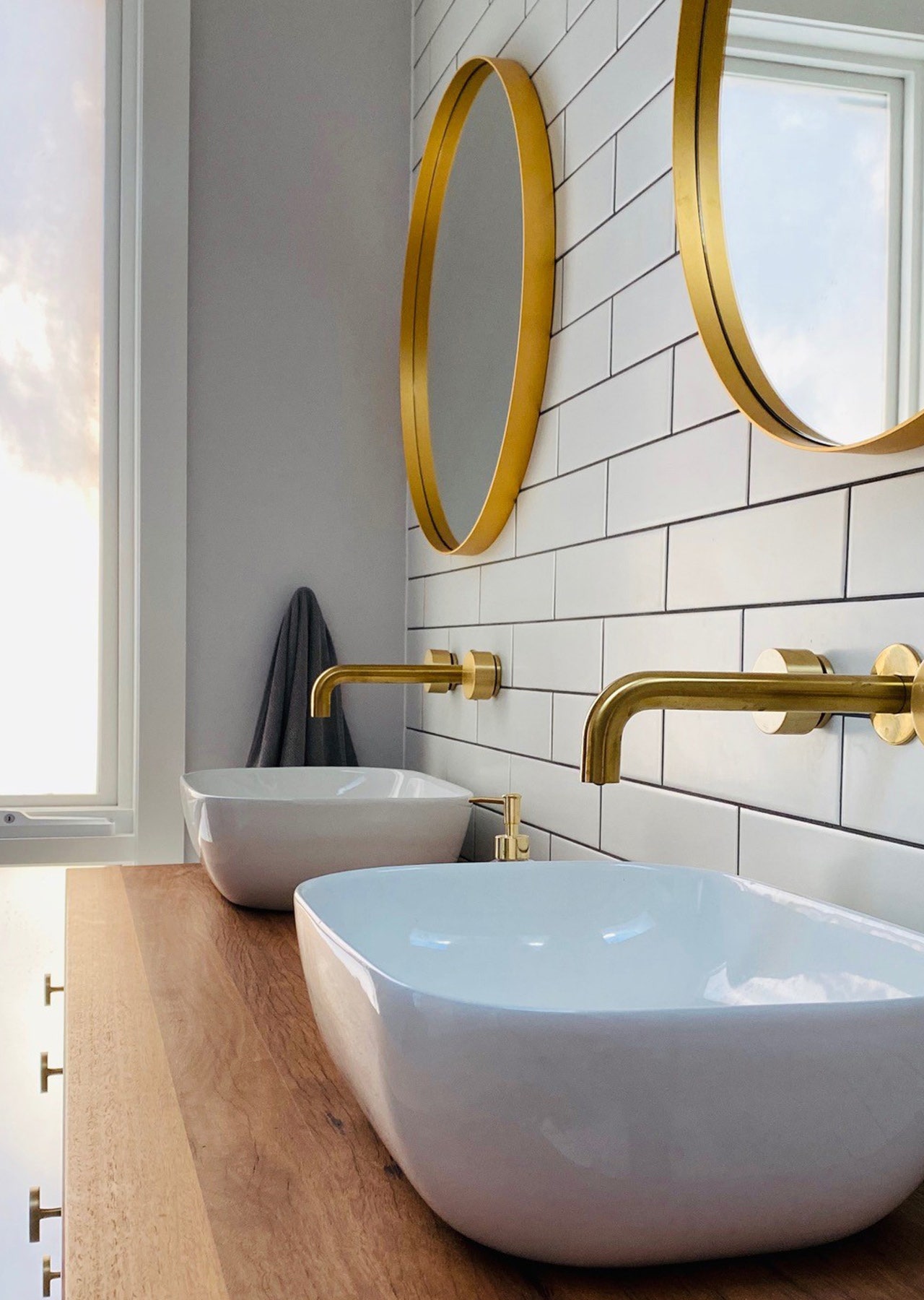

What Is The White Powder Appearing On My Unglazed Tiles?
Efflorescence Is A Natural Phenomenon Where Soluble Salts Rise To The Surface From A Concrete Slab
This is usually the concrete slab but could also be the mortar bed, tile adhesive, or grout. The soluble salts rise to the surface and as they dry, a white crystallised powder is left as a residue on the surface of the unglazed tile. The problem may also be noticed on some brickwork.
Efflorescence does clear up over time unless there is an ongoing issue with rising damp from the substrate. It is defined as the migration of soluble salts and is not due to substandard tiles, adhesives or grout; and generally, there is nothing to worry about.
So What Can I Do Now?
The only real solution is to brush the surface with a stiff-bristled brush and vacuum away. Repeat this from time to time and generally, it should eventually reduce the amount that reoccurs. You can also wash with EFF Plus remover following directions on the packaging. Leave the solution on the tiles for two minutes, scrub the surface with a stiff bristle brush then thoroughly wash off with clean water. Neutralise the acid with a PH neutral cleaner.
Our Hot Tip: Always take care with natural stone tiles (like marble, granite, and sandstone) and acid-sensitive products when cleaning or removing stains. Check with your local Beaumonts team for the best products to use and always test products in an inconspicuous area first.
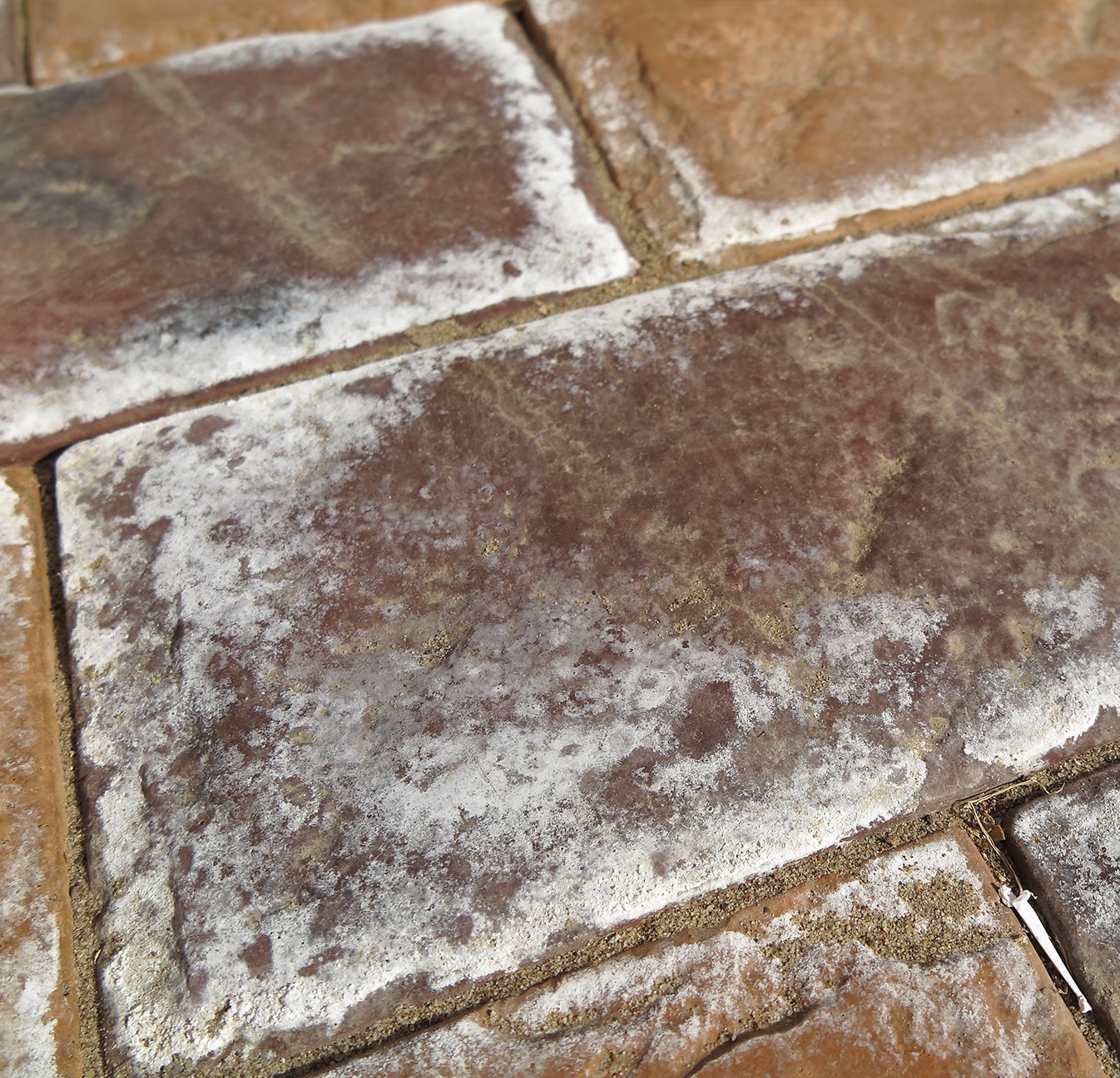

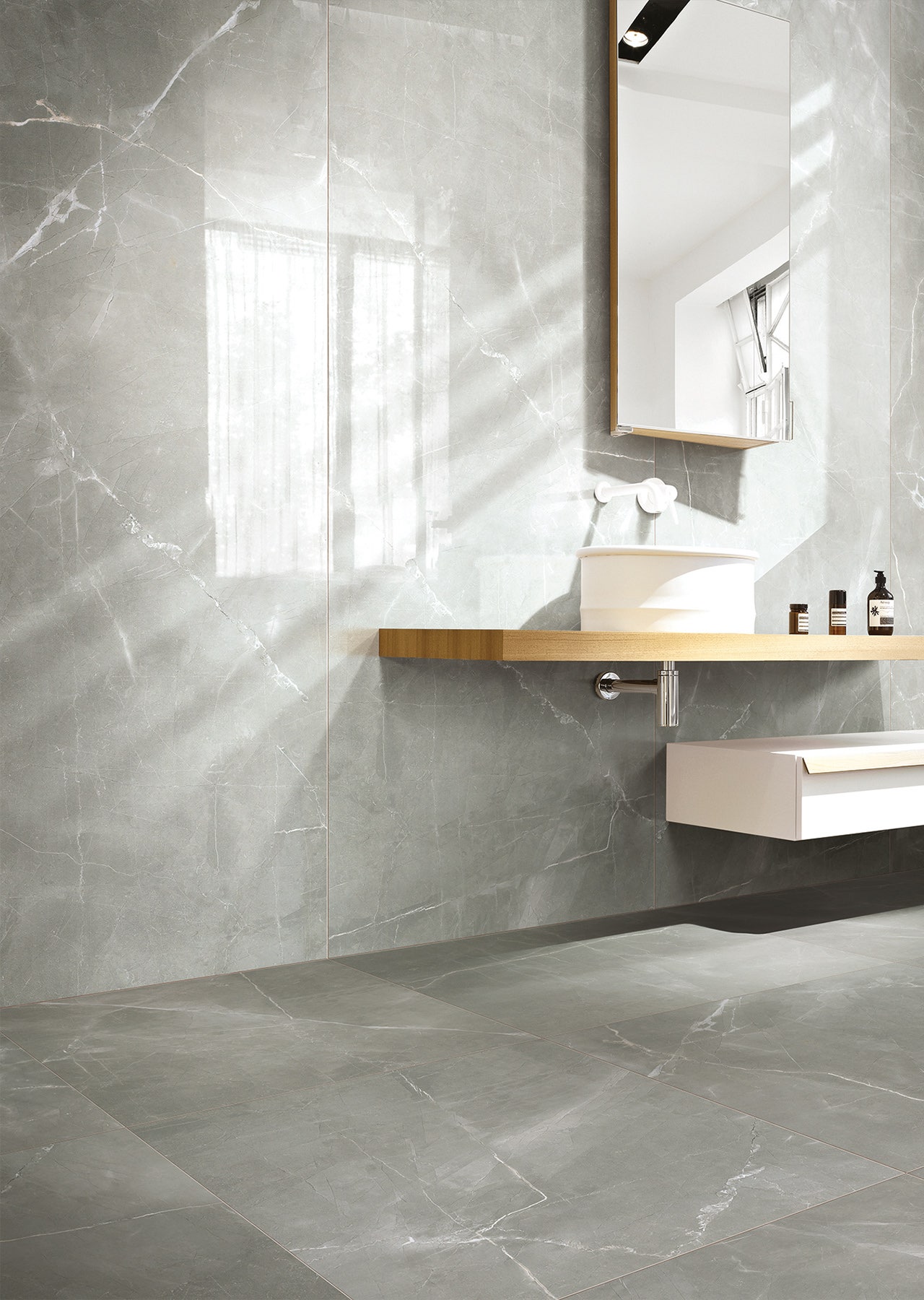

Why Doesn’t My Polished Porcelain Floor Have An Even Shine?
Mirror mirror on the wall, there’s a very good reason why polished porcelain floors don’t always shine like you.
Polished porcelain tiles are not mirrors and will display variations (which are sometimes referred to as a haze or cloudiness) in the level of shine when viewed under certain lighting conditions. This characteristic of shininess is an inherent feature in polished porcelain tiles, regardless of the colour of the tile, or where it was made. Many people refer to this appearance as optical hazing.
Porcelain tiles are a very high-quality variety of ceramic that is so dense it can be polished by special polishing stones to a very high finish. Beaumont Tiles sells three main types of porcelain tiles:
- Unglazed
- Glazed
- Polished
Unglazed porcelain tiles are a matt finish and are used in very high traffic areas, or areas where high rates of slip resistance properties are important. They can be made as matt or textured tiles.
Glazed porcelain tiles are the most popular type of porcelain tiles and are made by using a decorative, hard-wearing glaze (which can be matt or gloss) over the porcelain base.
Polished porcelain is simply unglazed porcelain that has been polished.
You may ask, “will they be perfectly shiny like a mirror”? The answer is no. Mirrors are made in a very different way to provide a near-perfect reflection. Polished porcelain tiles are made by polishing the surface with very hard grinding stones. The polishing process can open up microscopic pores on the surface of the tiles. These pores reflect light differently, rather than a perfect reflection like a mirror, therefore you may see a slight variation in shininess appearing in certain light conditions in the space where the tiles are laid. In the same way, slightly varying thicknesses of sealer may be perceived as variations in shininess. The appearance can change, being only noticeable for example when sunlight is directly shining onto the tiles from a low angle. These are normal characteristics of polished porcelain and should be expected.
Bob Beaumont's Hot Tip: The polished surface of a porcelain ceramic tile should never be expected to be perfectly reflective. Even an expensive car will not have perfectly reflective shiny paint for exactly the same reason.
Sealing & Cleaning
Virtually all polished porcelain tiles sold by Beaumont Tiles are pre-sealed with a very special penetrative sealer to make them more resistant to staining. It is still important, however, to promptly clean off any substance which is likely to cause a stain, as polishing and sealing a tile does not make it as resistant to staining as a glazed tile.
If the tile you choose is not pre-sealed, your consultant will let you know. It is then important to seal the tiles when they are laid and before they are grouted to avoid problems with stains. It is advisable to reseal the tiles periodically as a maintenance regime to keep the tiles at their utmost performance.
Most of the polished porcelains also come from the factory with a layer of protective wax on the surface of the tiles. This wax is normally water-soluble and not very hard to remove. In fact, most will be removed by the grouting process. Some wax may still remain on the tiles, however, and therefore will need to be removed by you, your tiler, or a professional cleaner.
As with any surface, the rule is to quickly wipe off anything which is likely to stain the surface.
The initial clean of the tiles need to be done really well to get off any invisible building residue such as grout haze. If this is not done, the tiles can look dull and dirt can actually stick to this fine coating. You can buy excellent products for this from any Beaumont Tiles outlet. This can be repeated if the tiles get really dirty, but for week-to-week maintenance, Beaumonts suggest using a ph neutral cleaner in a bucket of water. Learn more about cleaning and maintaining your tiles.
Our Hot Tip: We are always happy to stand behind our products. In fact, all first-grade Beaumont tiles have a lifetime guarantee. Before laying your tiles we ask that you inspect your tiles to ensure you are happy with them, and have a good cleaning and maintenance regime, including mats to external doors to give your tiles years of brilliant service.
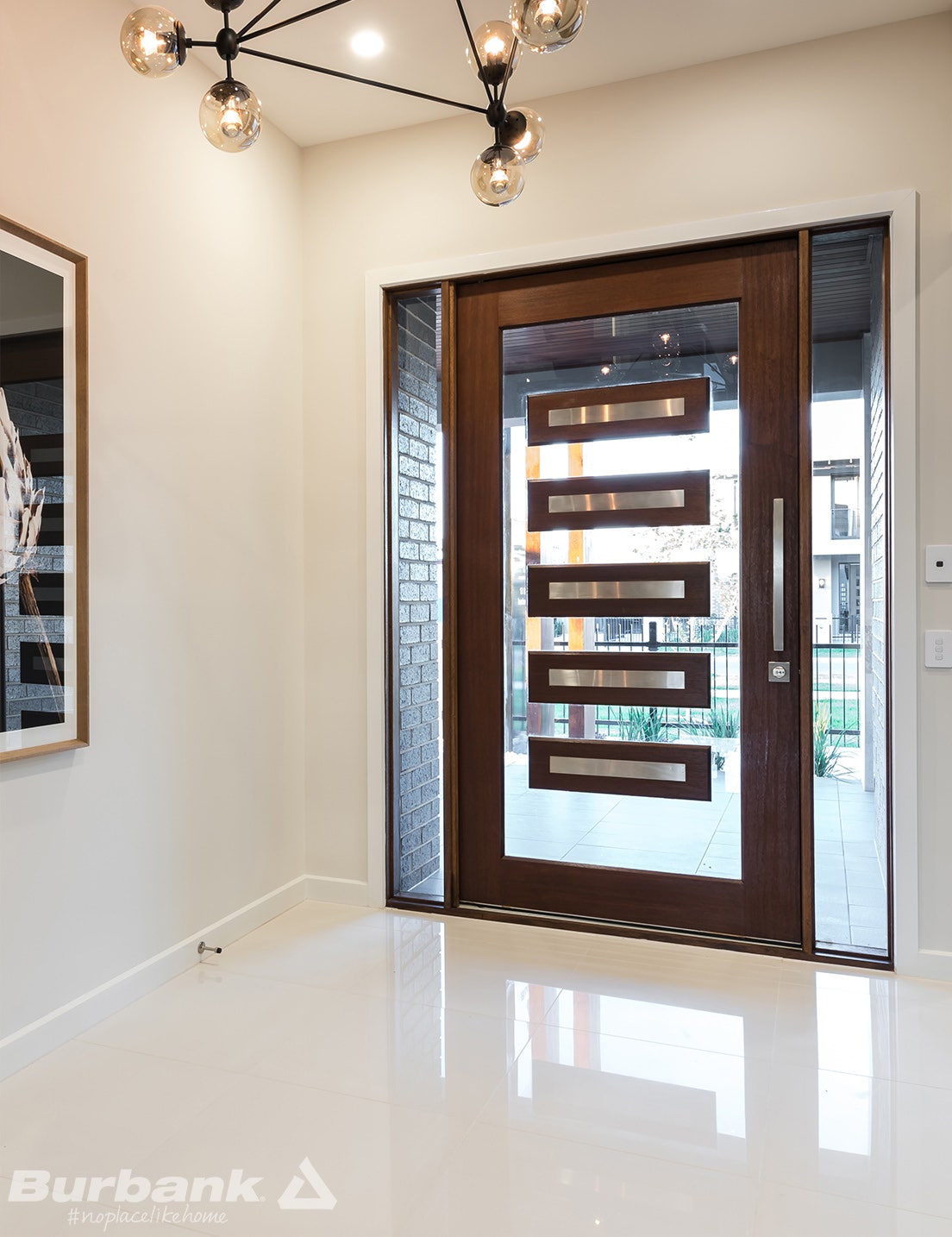

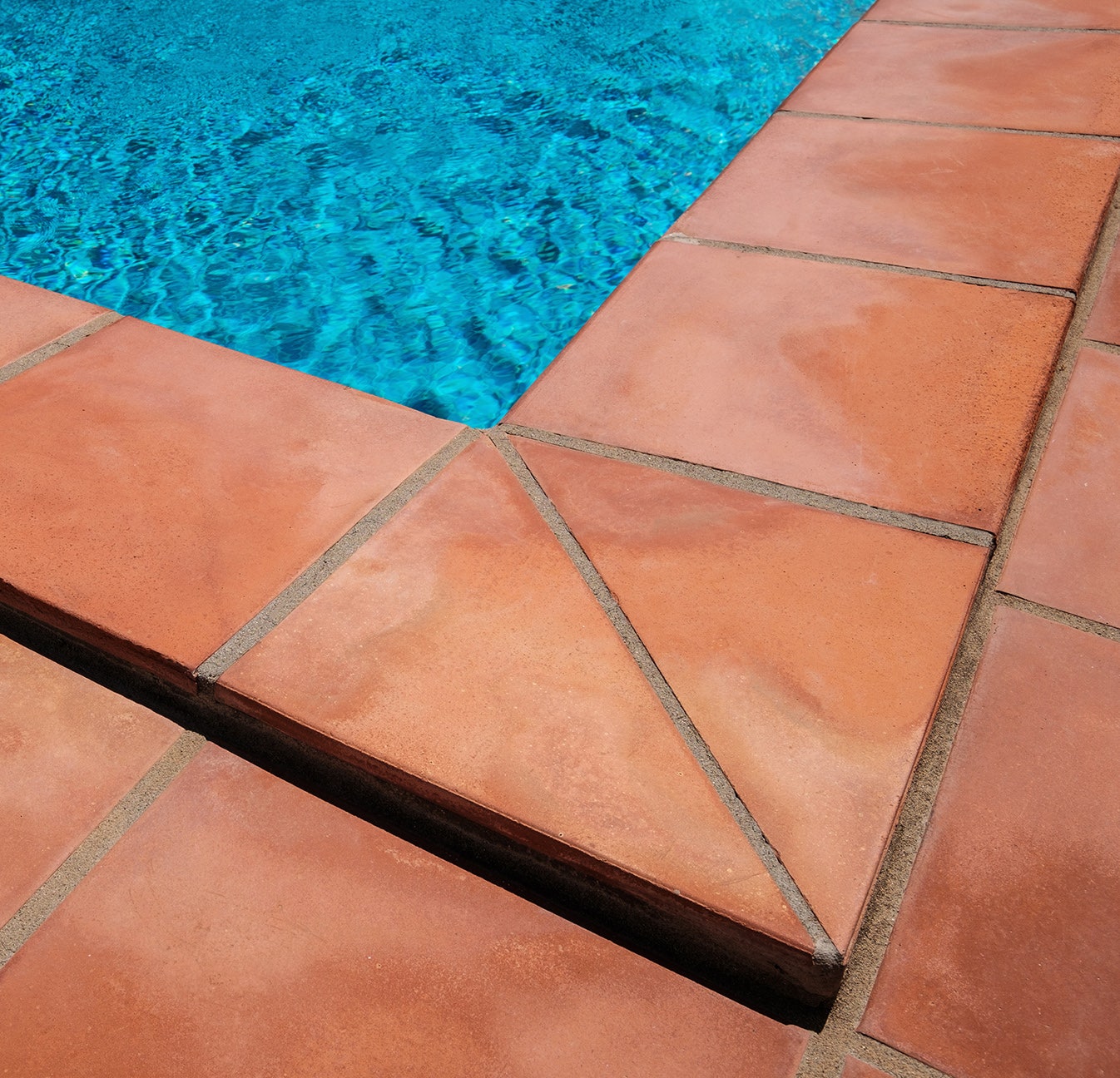

Is There Anything I Can Do About The Discoloured Terracotta Tiles Around My Pool?
The natural ageing process and patina of terracotta forms part of its character and charm. But there may be other stains you can easily treat.
Patina is a natural form of corrosion, giving terracotta some of its natural charm and is not a ‘stain’.
There are three types of stains we have seen on terracotta around pools;
- If the tiles around your pool have a white 'stain' collecting on the surface, and it can be brushed off, it is most likely efflorescence.
- A dark 'stain' that appears on pool tiles without reason is more than likely to be mould. This can be treated, our experts will provide you with advice on the best product to use.
- A stain that is a genuine stain from food or oils or drinks is another issue. We need to remember that terracotta is a natural and porous product. It will absorb liquids and oils and these will stain the tile. A build-up of these over the years can actually be part of the character and charm of terracotta. It is a natural ageing process or 'patina.' And is accepted as very normal in countries where terracotta has been used for over 100s of years. As with all natural stone, sealing your terracotta gives you an added barrier between the tile and the party!
Our Hot Tip: All natural stone needs to be sealed to help against staining and you need to commit to repeating that process every few years, we've got the products you need in-store.
What To Do If Efflorescence Is The Problem.
If the problem is efflorescence, you'll see a white powder. This is a layer of soluble salts that are dissolved in the underlying cement substrate or adhesive and left behind after water has migrated through the body of the tile.
A whitish film can be left also when the saltwater in a saltwater pool splashes out and the water evaporates leaving the salt behind in a powdery film.
The white powdery salt residue should be brushed off and should reduce over time It is helpful to minimise the amount of water able to reach the substrate. Check for cracks in the grout or exposed substrate edges.
Penetrating sealers are not permanent protection for unglazed tiles in outside situations but sealing the grout and tiles will help reduce water transmission from the surface.
There is more on Efflorescence and Leaching in ‘White powder is appearing on my unglazed tiles’.
What To Do If Mould Is The Problem.
Mould is a growth that can be found on unglazed tiles or grout where there is dampness and the conditions are right.
Mould will need to be cleaned off using Heavy Duty Tile and Grout Cleaner. Once the tile is clean and well rinsed, it will help to use a penetrating sealer. It needs to be appreciated, however, that mould will probably keep reappearing in damp conditions.
Our Hot Tip: Did you know we have an awesome range of tile maintenance and cleaning products to help keep your tiles gorgeous.
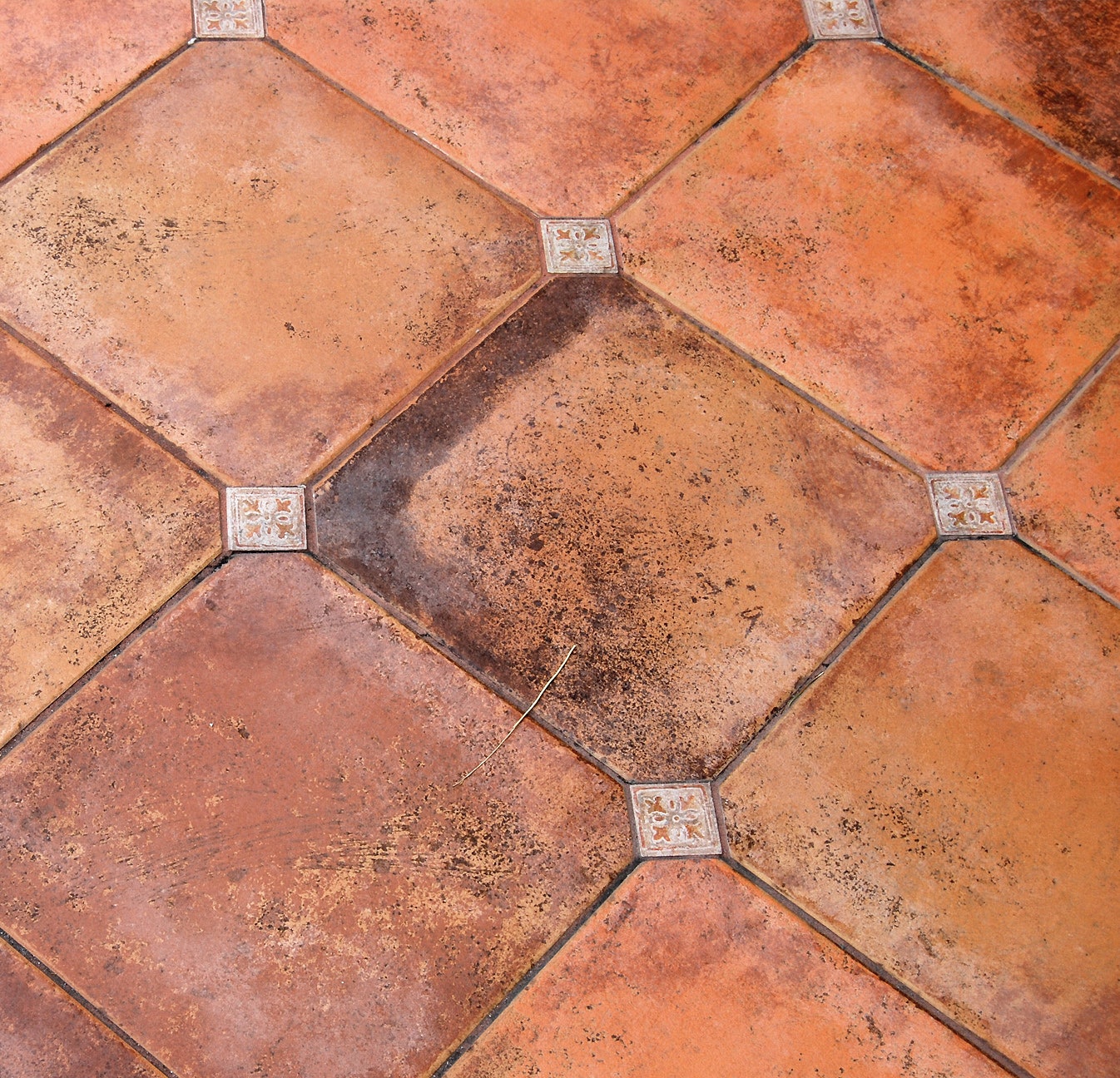

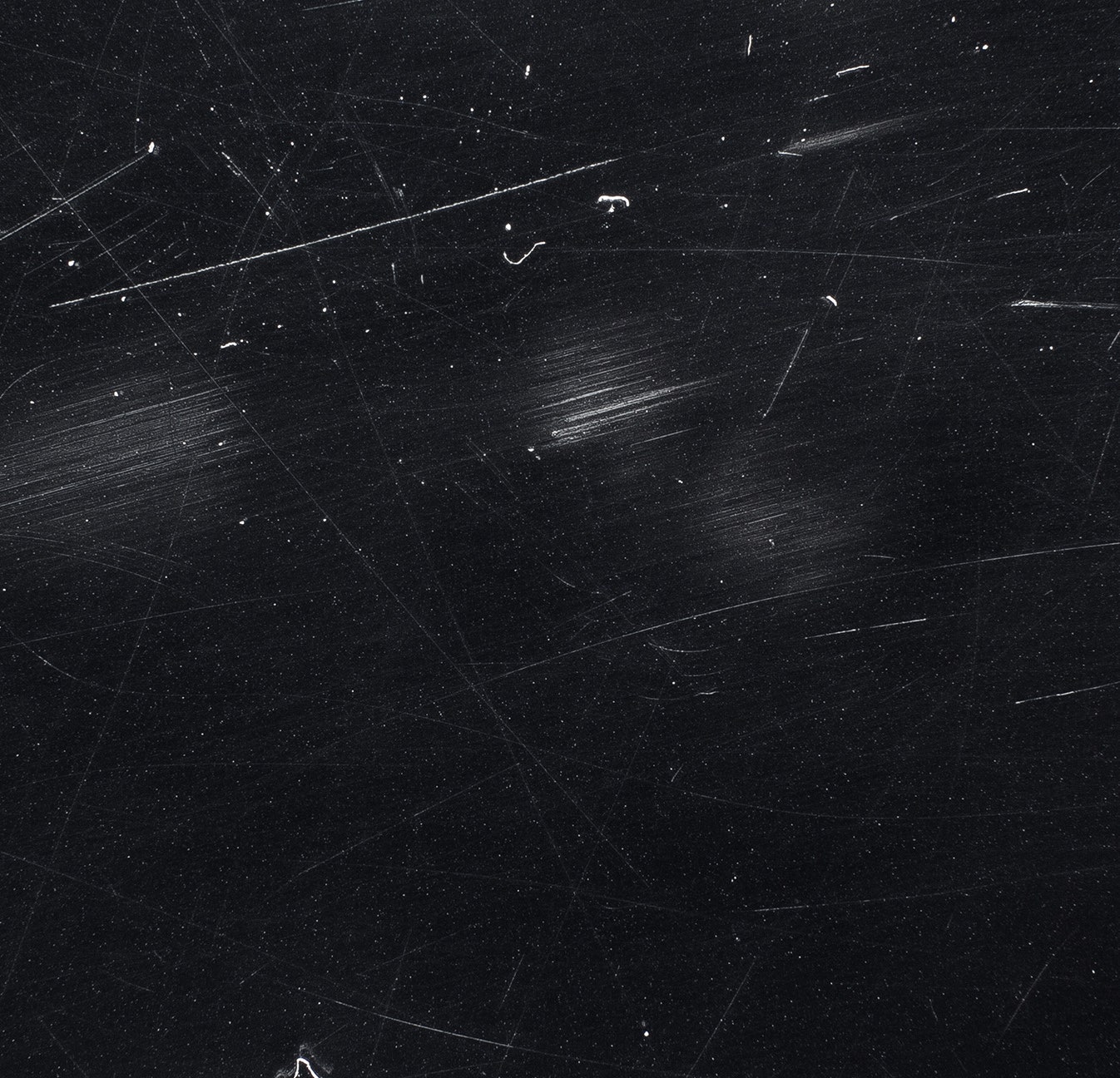

What Has Caused My Tiles To Become Scratched?
From unpacked tiles stacked carelessly, to muddy boots, gritty and sandy soles, ladders, and dragging materials over them…tiles are super strong, but like us, they’re not invincible.
There are a number of causes for scratches on tiles.
Scratches on tiles after delivery prior to laying. Softer wall tiles can be scratched when they are unpacked and stacked carelessly. It can also occur when a tile or tool is dragged across the surface of another tile.
On rare occasions during freight and delivery, glossy tiles can become scratched. This can happen if two tiles are rubbing against each other during freight and transport. If this does happen, it is usually with wall tiles that have a softer glaze than the tougher floor tiles. One of the reasons we only sell in full boxes is to reduce the possibility of transportation scratching.
Naturally, we do not want scratched tiles to be installed in your home, and neither do you.
Your tiler should not install any scratched or damaged tiles. Please ensure you are happy with your tiles before they are laid. It is standard practice and the responsibility of the tiler to put any damaged tiles aside.
In the Australian Standards, a scratch is defined as such when it can be observed easily from a normal viewing distance. A scratch on a floor, for example, would need to be seen without bending over from a standing position. If you need to get close to the tile to find the scratch, it is not a scratch according to Australian Standards.
If the tiles have not been installed, contact the Beaumont Tiles store from which you purchased them. We will arrange to exchange the damaged tiles or credit them if you prefer in accordance with our Returns Policy.
If the tiles are installed, there are two options to consider. The best option is for the tiler to replace the scratched tiles. These should not have been installed, so the tiler should repair the job before completion.
Scratches On The Tiles After The Tiles Are Laid But Prior To Handover.
The most vulnerable time for any flooring is during construction when tradies with muddy or gritty boots can walk over them and abuse it in other ways such as using ladders without proper soft feet or dragging materials over them. Most good builders will protect the floors once they are laid but some do not, or the protection becomes dislodged. Shiny tiles are the most prone to damage so it is extra important that they be properly protected. Of course, Beaumont Tiles cannot be held responsible for this damage.
It's a great idea to ask your tiler before they start the job and ask what they do to protect newly laid tiles while the job is in progress.
Scratches On The Tiles Caused After Handover.
Tiles are mighty tough and it takes a lot to damage them but it is possible. It is, for this reason, we urge you to keep spares. Very shiny tiles are more prone to scratching so it is important to take extra care with them, but it should be standard practice to have mats at the doors to remove gritty dirt or sand. If tiles are not abused they will last for many, many years but remember they are not indestructible.
Our Hot Tip: For any additional advice, please call our helpline 1800 4 TILES or pop into any of our 110+ stores.
Our Hot Tip: Place mats at doors coming in from outside to remove gritty dirt or sand before your tiles are walked on.
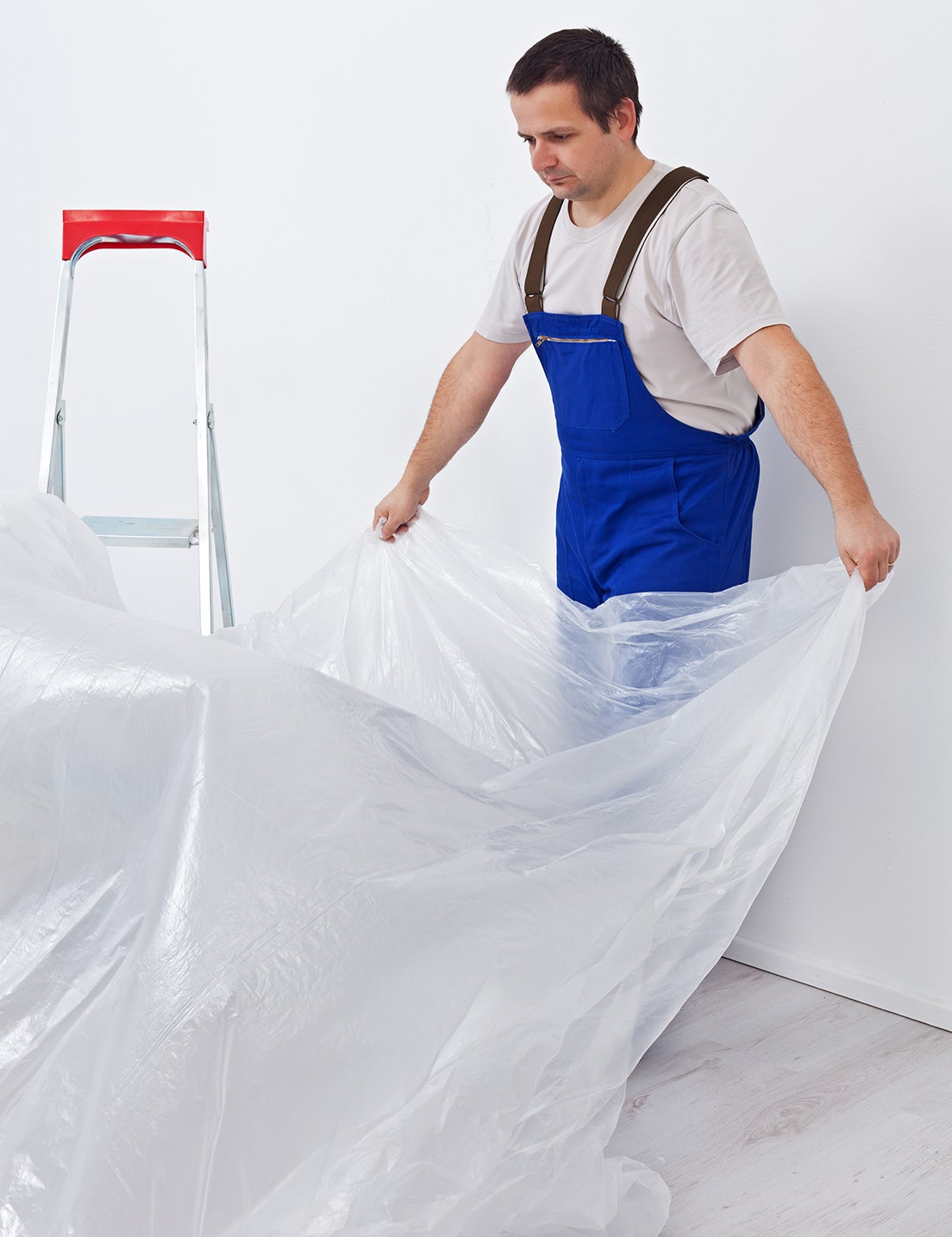

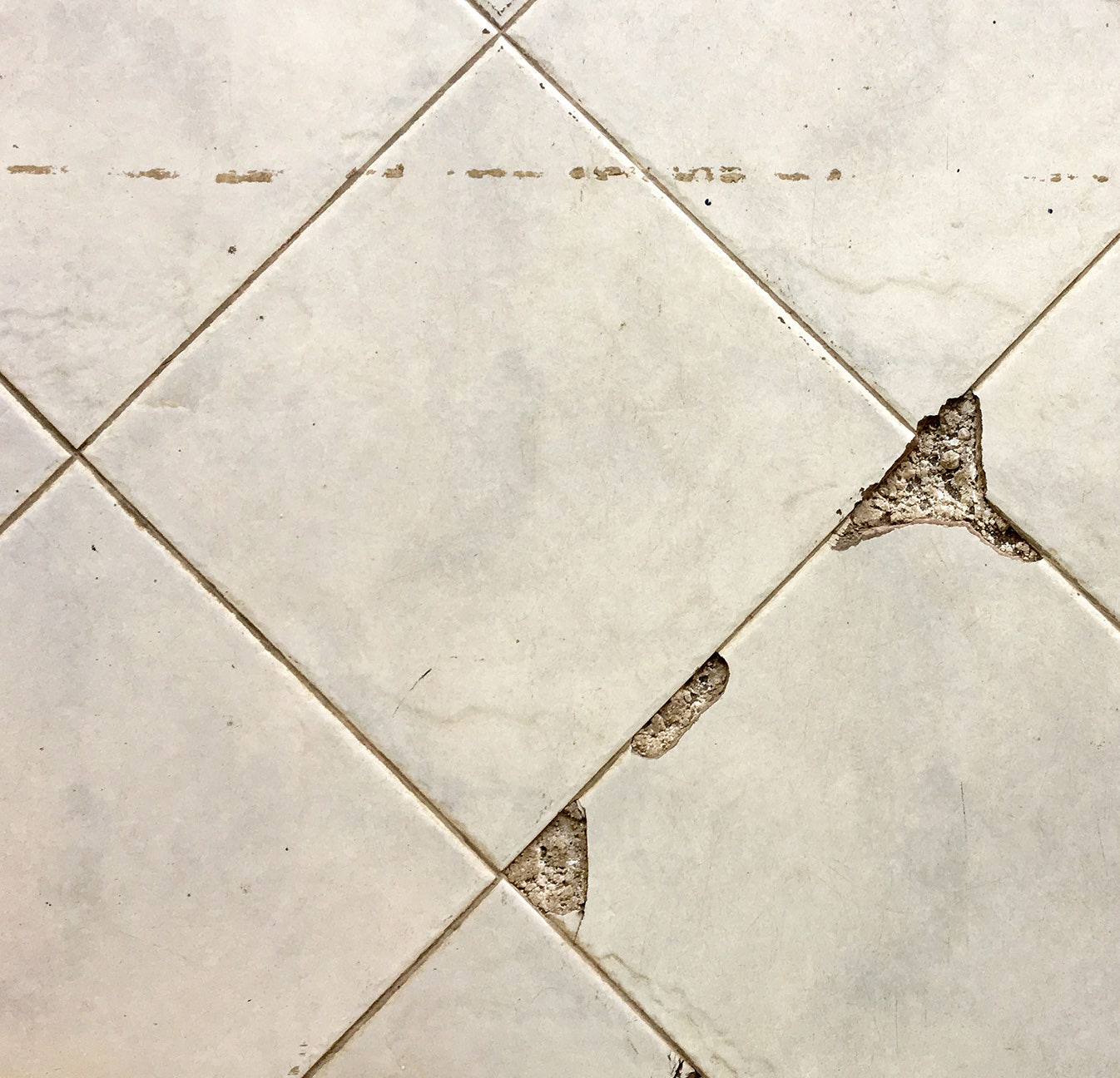

How Can I Replace a Chipped tile?
Discover The Causes For Chipped Tiles, Then Bring Out The Spares For An Easy Fix!
Tiles are generally pretty tough and durable, but they are not indestructible!
If a hard object is dropped onto a glazed tile, there is a chance of it chipping the tile. Naturally, the bigger, heavier, harder, and sharper the object being dropped, and the greater the height; the more likely it is to chip the tile.
A chip caused by impact will generally manifest as a crater in the glaze and chip through to the biscuit of the tile.
A glaze imperfection or bubble that chips off will leave the bottom part of the bubble still glazed to the biscuit.
Stones trapped in the soles of shoes and metal tips on stiletto heels can also chip tiles because the effect can be a hard impact onto the tile over a very small area.
Our Hot Tip: We always, always, always… did we say always, recommend you order 10% more tiles than you need and this may be one of those reasons.
What Can Cause The Problem?
It is not really all that common for tiles to chip, especially when we consider how many millions of tiles are laid in Australia each year. The reputation that ceramic tiles have for durability and strength generally leads a homeowner to assume that the tile must have a fault if chips appear. Causes of chipped tiles may include:
- Dropping any hard, sharp, heavy object onto a tile
- Stones trapped in the soles of shoes
- Metal nails or tips on stiletto heels
- Dragging furniture with metal-tipped feet
- Chairs with steel legs and no canisters or rubber tips
- Knocks on the edges or corners of tiles that are not laid flat.
So What Can I Do Now?
- Working your way outwards gradually to remove the tile with special attention when you get close to the edge of the tiles so as not to chip the next tile.
- Replace the tile and grout
- Or simply employ a tiler to replace the tiles for you
Our Hot Tip: If by chance you didn’t keep spares, contact the store you purchased your tiles from or contact us on 1800 4 TILES with the tile and batch numbers and we will help you find a solution.
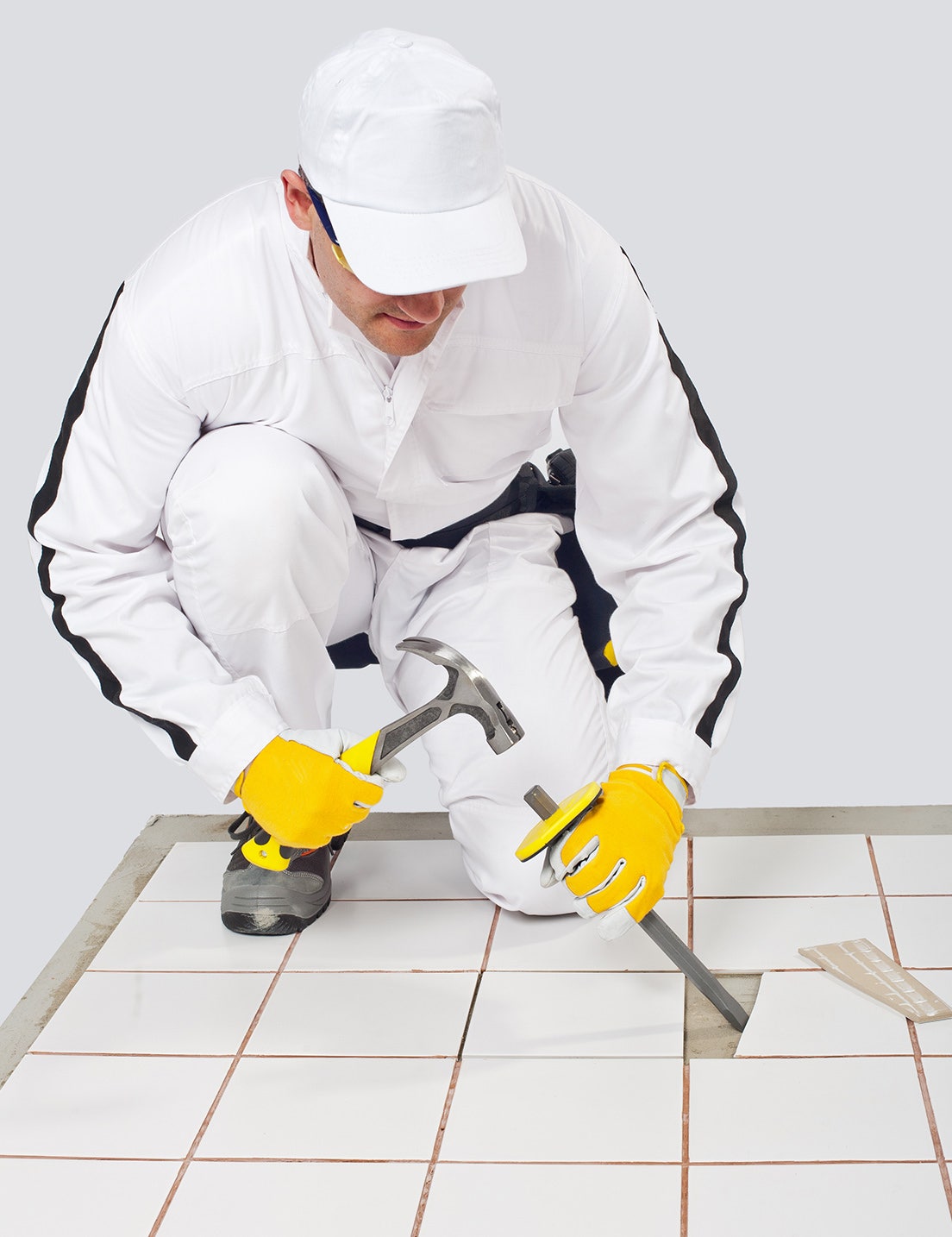

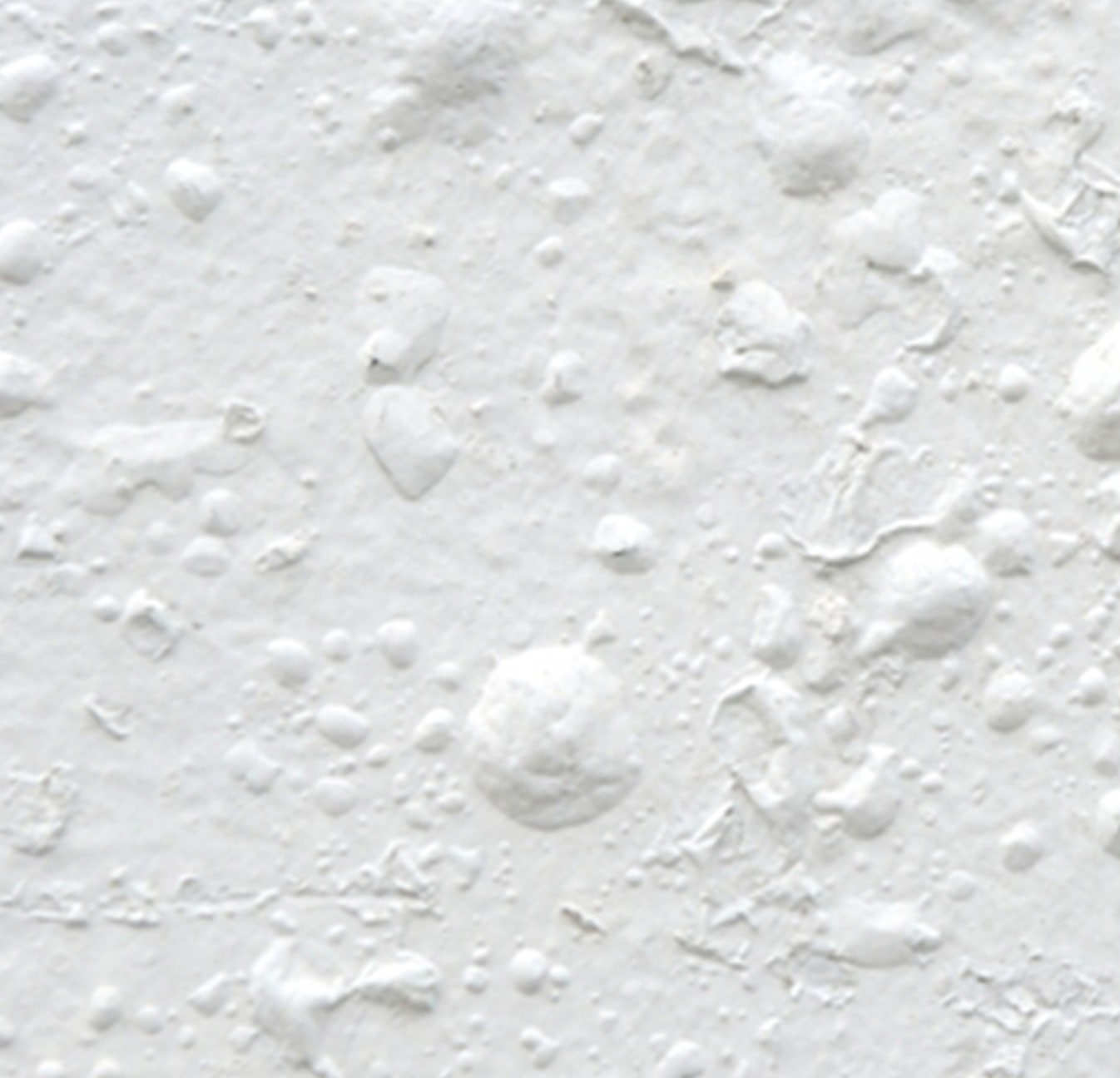

Uh Oh! I Think my Tiles Have Been Suntanning Too Long?
Tiles Looking A Little Like Your Bubbly Skin After Too Much Fun In The Sun? If You've Received Some Tiles With Blisters On The Surface, Then Aloe Vera Gel May Not Cut It For This One.
All of our tiles are automatically scanned for defects immediately after manufacture but from time to time a defect may slip through. If you find blisters or any other defects on the surface of your new tiles, please do not lay them.
So What Can I Do Now?
If you find a tile with defects simply bring it back to the store you got it from and they will happily replace it for you. Quite often a tiler will use a tile with a surface blemish for cutting purposes.
If you check the side of the box for the printed batch number, we should be able to supply tiles that match the shade of your other tiles. We will also do a thorough check of our stocks from that batch to remove any others that may have slipped through on the same day of manufacture.
It is important all tiles are checked before being laid as once they are laid and any problem is addressed immediately. Unfortunately, no claim for a replacement tile can be made after it is installed.
We suggest you ask your tiler to keep an eye out for imperfections when tiling and to keep any tiles they are not happy with aside. Once your tiler has glued the tiles, they have accepted that they are good to install and therefore it becomes the tiler’s responsibility to remove and replace the affected tiles.
Our Hot Tip: Our Quality Guarantee protects you and we’ll jump in and help, but you must find the defect before you lay it.
Why Are My Tiles Wearing Out?
Your Doormat Welcomes Visitors To Your Home. It Is Also Essential To Remove Abrasive Grit And Sand From Shoes Before Everyone Comes To Visit And Starts Marking Your Tiles.
Tiles are well known for their durability and wear resistance. But we need to always remember that tiles are not indestructible. If mistreated, or subjected to harsh conditions, or wrongly selected for the purpose, the glaze on a ceramic tile will scratch or can wear.
There needs to be an understanding of the difference between 'wearing' and 'scratching.' Wearing is where the glazed surface is thinning and eventually actually wears through. Scratching is damage to the surface from a harder substance that scratches the glaze. Heavy scratching can actually dull the surface of a glazed tile. It is damage to the surface, but it is not actually wearing through. Much like granite in a heavy traffic area will dull off from scratch, but is not worn out.
The best way to avoid tiles becoming worn is to get good advice when selecting them. This way, tiles that are suited to the area can be chosen and that includes reasons such as colour, ease of cleaning, durability, and resistance to wear.
The other way is to keep the floor clean and free from sand and abrasive dirt. This is especially important at doorways to the outside of a home or building. Abrasive grit is brought in under shoes and if there is a doormat, this grit is removed and left on the doormat. Even gravel (which can be equally as hard as granite) can be trapped under a shoe and then trodden onto the tiled surface.
Our Hot Tip: To ensure you select the right tile for the job, we recommend you use our Wear Rating information and talk to our expert teams.
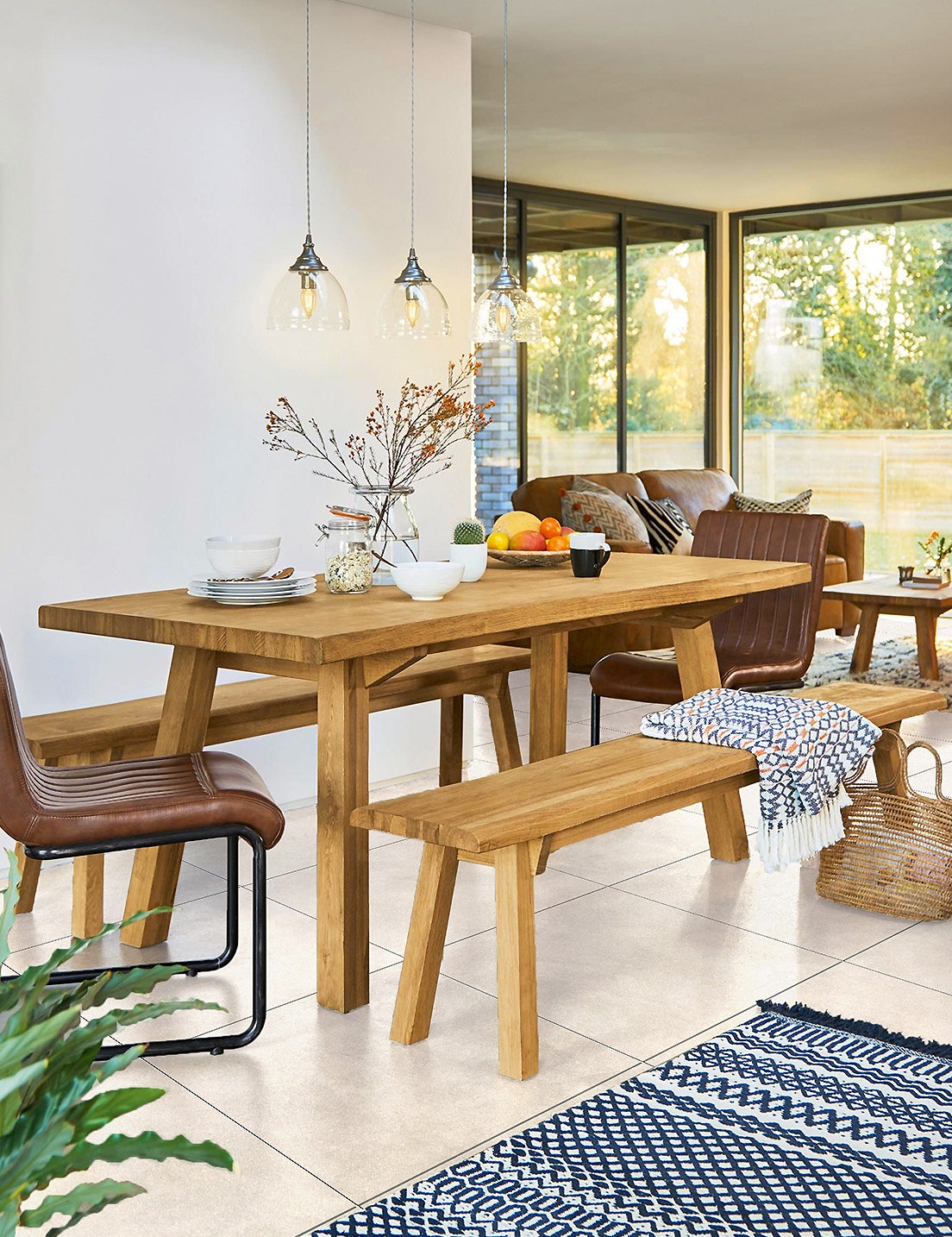

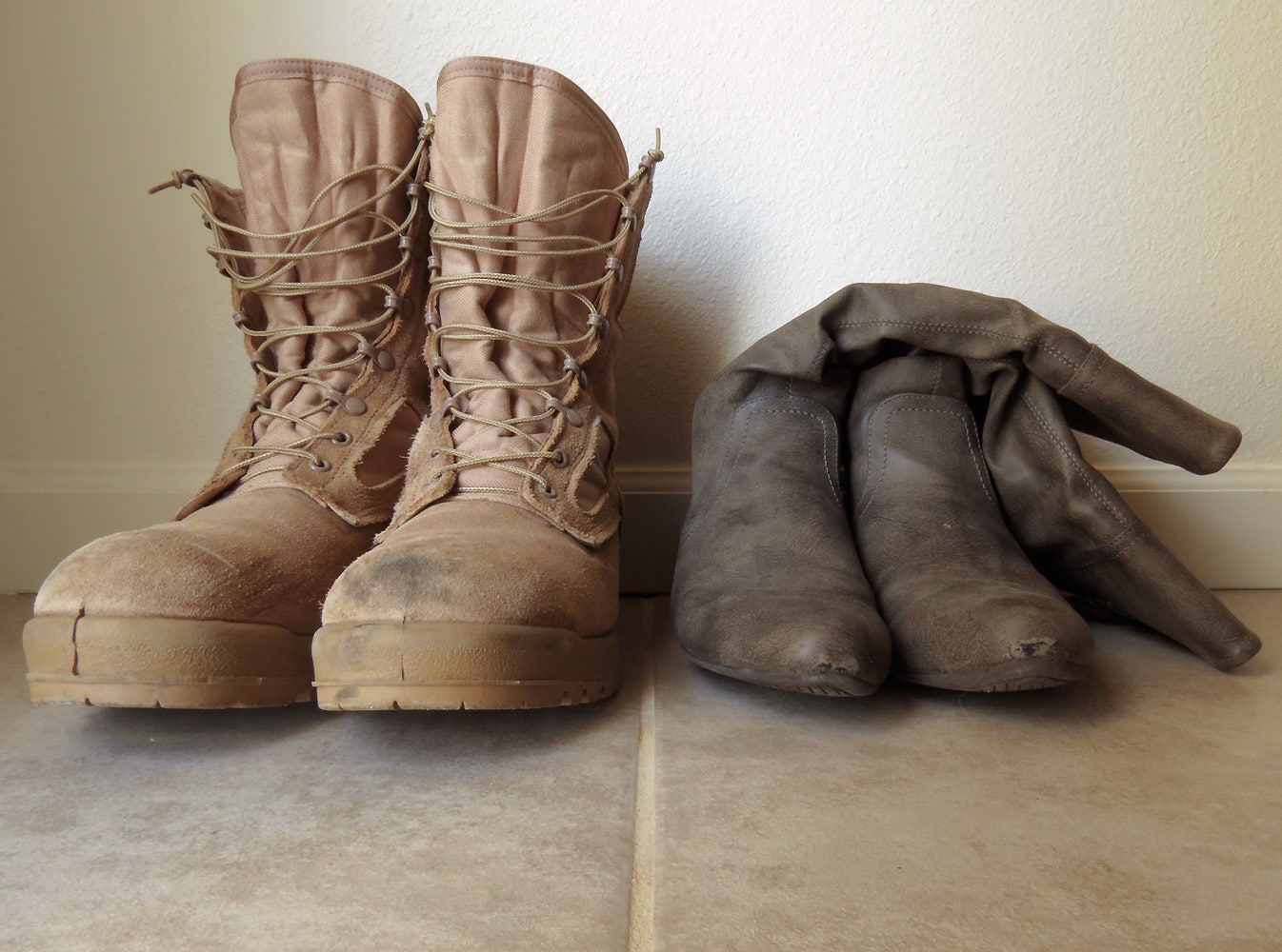

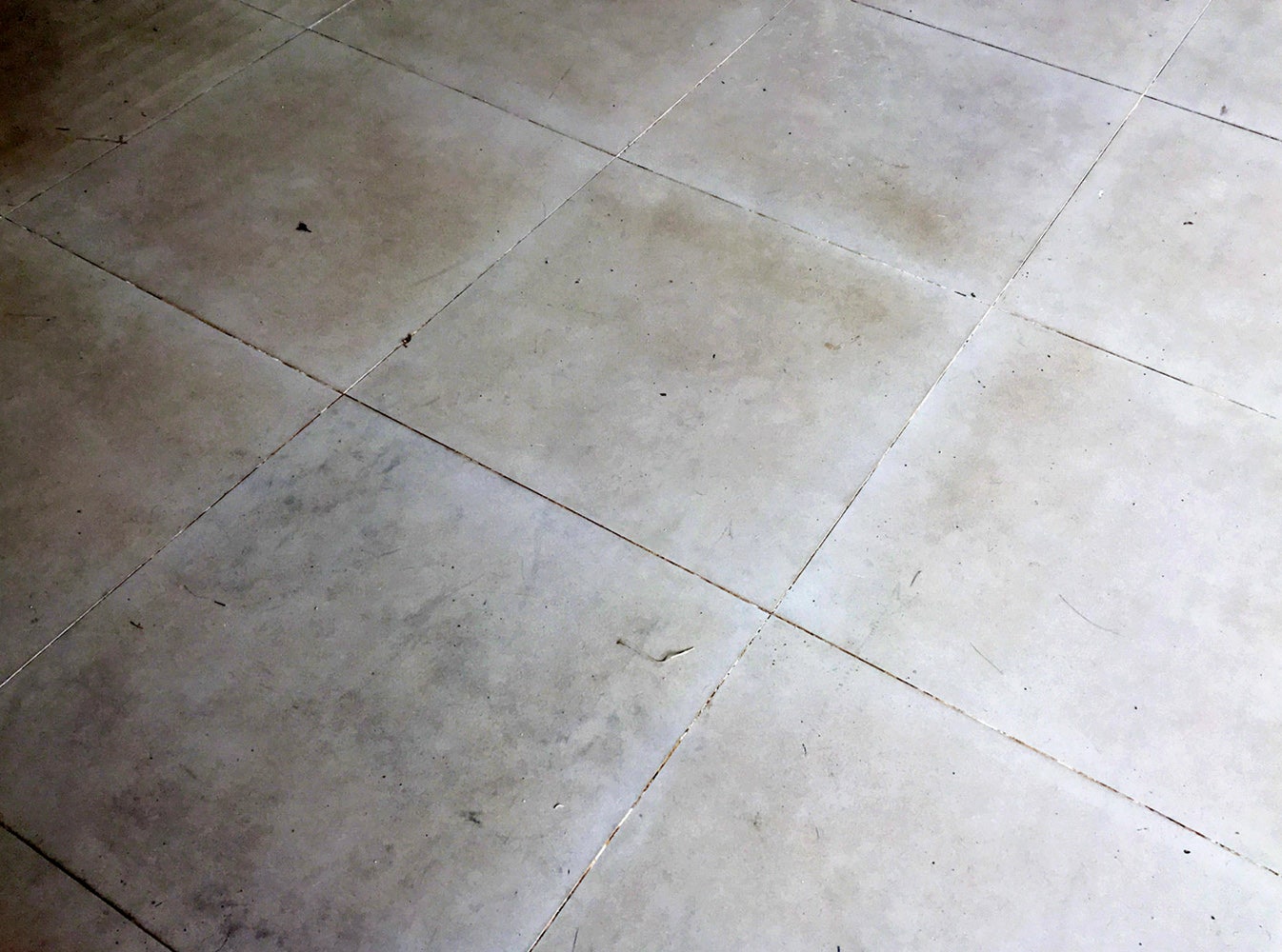

What Can Cause The Problem?
- Absence of doormats at doorways to the outside of a home. These remove grit and sand from shoes which can be very abrasive on tiled surfaces. Sand on the soles of our shoes acts in much the same way as sandpaper.
- Incorrectly specified tiles that are not suited to the traffic conditions of an area. Always heed the advice of the Beaumont Tiles consultant and explain clearly the conditions to which the tiles will be subject. Tiles are all given a wear rating to help you make the most suitable selection.
- Keep your tiles clean. A clean tile won't have a film of accumulated grinding dirt on the surface.
- Avoid the use of unnecessary chemicals, especially acid-based ones and the use of hard cleaning implements such as steel wool. These too will deteriorate the surface of a tile.
So What Can I Do Now?
Once the glaze on tiles has worn, it can't be rejuvenated in any way.
Likewise, damage by harsh scratching cannot be reversed.
Scratched tiles will continue to perform as a tile should and there will be no degradation in their performance as a surface. But, once a tile surface has worn through, and the protective glazed surface is gone, the tile will need to be replaced.
If you find yourself in a position where you need to replace a worn tile and you have spares, well done, if not please give us a call on 1 800 4 TILES or drop into one of our 110+ stores and we’ll help you find a solution.
Our Hot Tip: We always, always, always… did we say always, recommend you order 10% more tiles than you need, and this may be one of those reasons.
Why Are My Tiles Cracking In The Corners?
Some Of Us Love Pork Crackling…. Tiles Cracking Not So Much!
If you notice that one or two (or in bad cases, several) tiles have developed a crack across a corner of the tile, then it is almost certainly due to faulty application of the adhesive.
If your cracking is in straight lines across several adjoining tiles, refer to the article “My tiled floor is cracked”.
The tiler has not achieved full coverage of adhesive under the tile and there will be a 'void' under the tile. When pressure is applied to that tile, it will crack. This can be a chair leg, table leg or even someone walking over that tile with stiletto heels. The pressure on that section of tile, if it is not supported will cause it to crack or break.
It may be that your tiler is a 'dabber.' He will 'dab' blobs of adhesive onto the back of a tile and then place it in position. This leaves “voids” where there is no adhesive to support the tile. Alternatively, the tiler may not have extended the adhesive all the way to the edge of the tile, again leaving a void near the corner. The correct method is to apply the adhesive with a correctly sized notched trowel to the floor and then bed the tile into the adhesive, or with all larger tiles spread adhesive on the floor AND on the back of the tile.
It is easy to find if this will happen to any more tiles in the installation, or if it is an isolated one or two. Tap the tiles with a coin or screwdriver handle. Where there is a hollow sound, there is a void below the tile and that tile is a contender for a future crack.
Our Hot Tip: Keeping your tiler's details safe and secure is something we recommend in case you need to contact them again for something like this a year or two down the track.
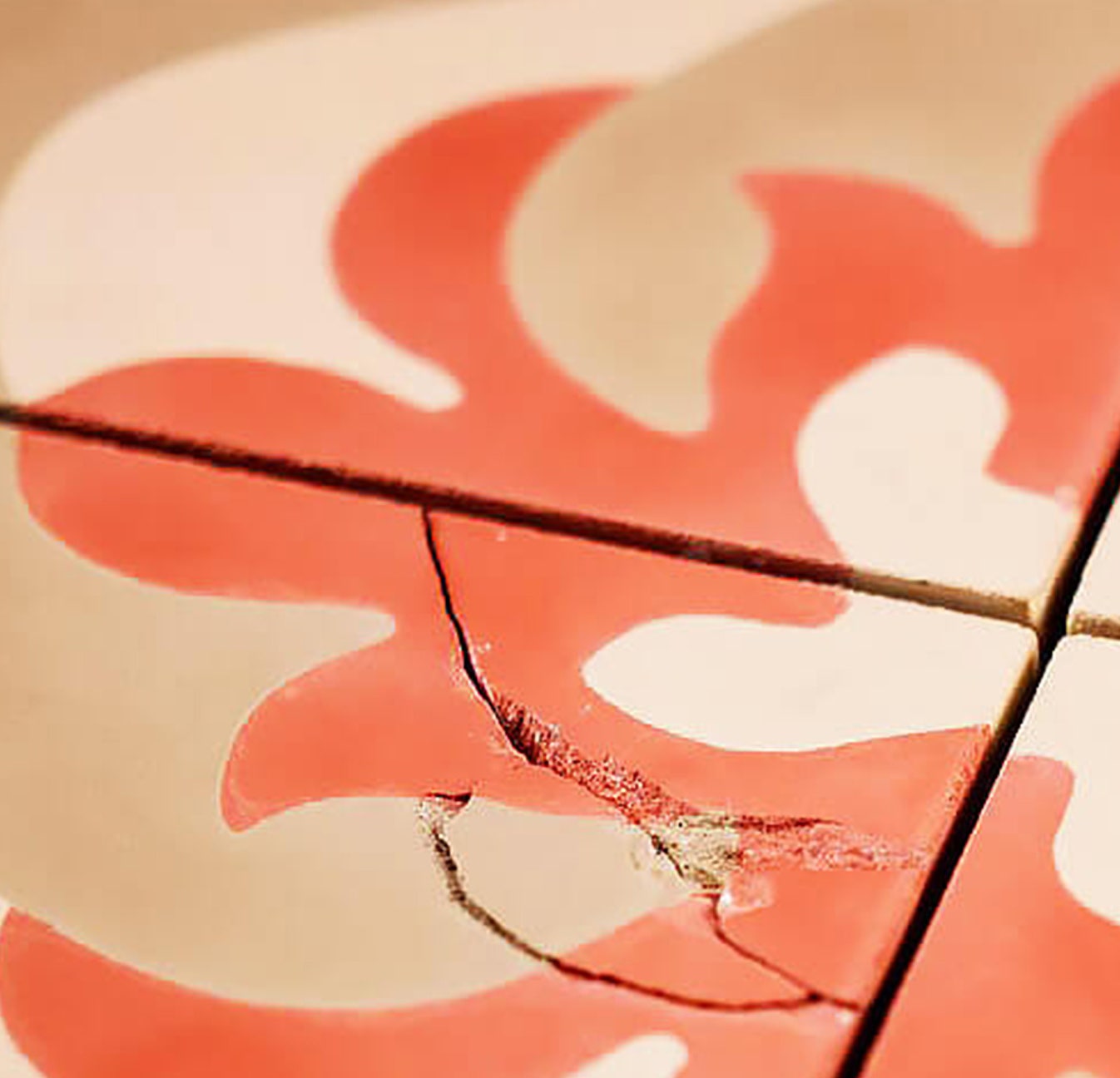

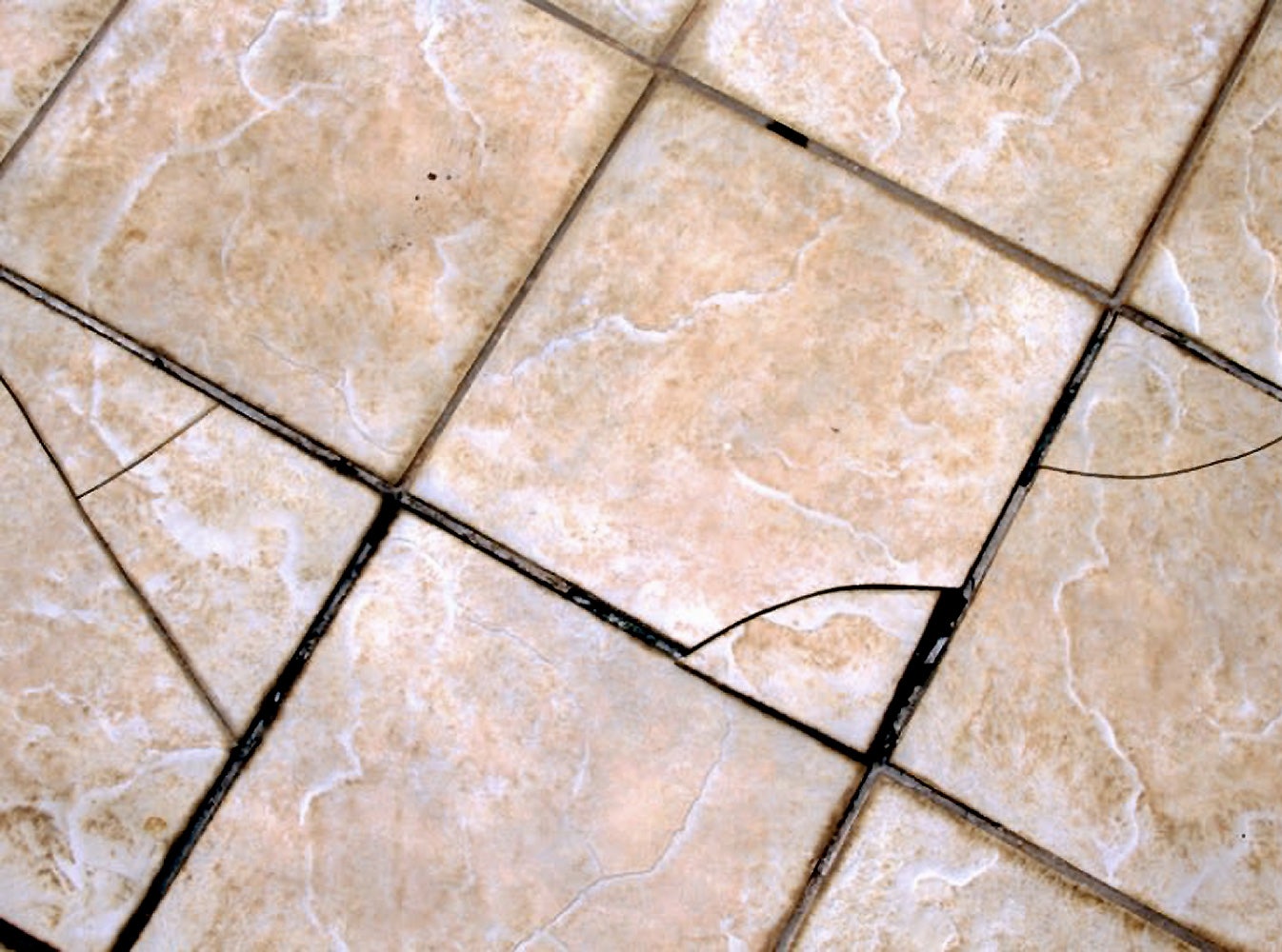

So What Can I Do Now?
The tiles were not laid correctly and rectification is needed.
The damaged tile or tiles should be removed and replaced by the tiler or builder who is responsible. While they are on the job, a check should be done for any other tiles that are also drummy.
Our Hot Tip: Always check the job thoroughly before the tiler leaves the job and of course always order 10% more tiles than you need, just in case.
Why Is My Tiled Floor Cracked?
If Cracks In Your Floor Are Running Across Several Tiles In What Appears To Be Lines, The Issue May Be Deeper Than The Surface.
Whenever people see cracked tiles, they immediately assume that the tiles are faulty. In reality, tiles are solid, inflexible flooring and any cracks appearing are a reaction to another cause. If your cracks are running across several tiles in what appears to be lines, read on. If the cracks appear to be more random, the problem may be due to incorrect surface preparation or poor adhesion or voids at the back of the tile resulting in random cracks, particularly in the corners. Everything you need to know about tiles cracking in corners is above.
Cracks that run in lines across several tiles are due to movement in the substrate. There are structural problems that need attending to. Don't be tempted to cover the problem with a rug, for example, it's an issue that needs to be fixed.
What Can Cause The Problem?
- Excessive movement in the substrate will cause a crack in the tiled surface that runs through several tiles in a roughly straight line.
- If the tiles are laid over a slab of concrete and a crack appears on the tiled surface, then that slab is moving and there is a structural issue.
- If the crack occurs at the meeting point between two slabs that were laid at different times, then there should be an expansion or movement joint at that junction in the substrate. Cracking here is due to that movement or expansion being carried through the tiles. A movement joint is needed at this point.
- If the cracking occurs along the junction of two different surfaces, such as where a timber floor and a concrete floor meet, a movement joint is necessary and must be extended through to the surface of the tiles.
Our Hot Tip: It’s time to call your builder and get the bottom of the problem!
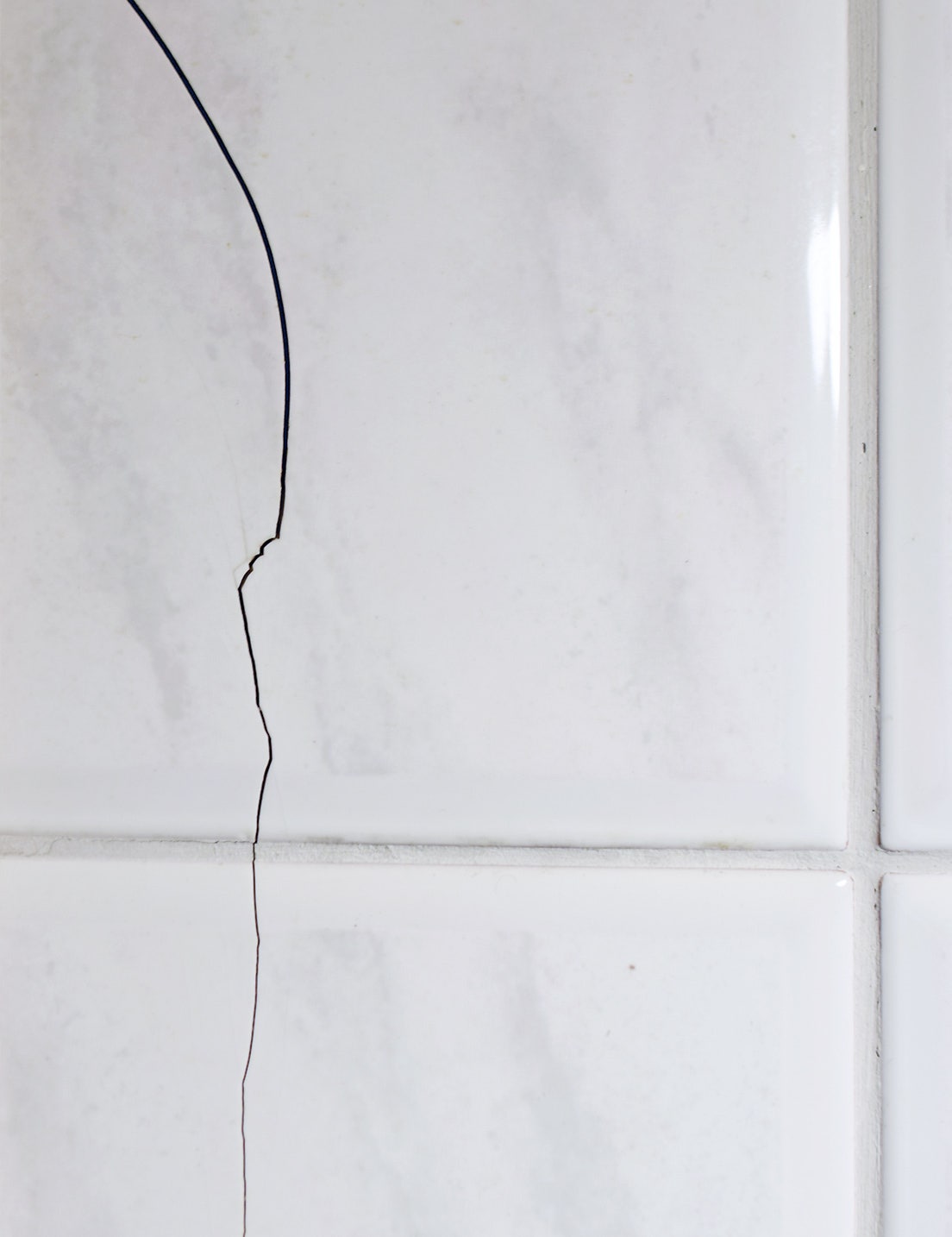

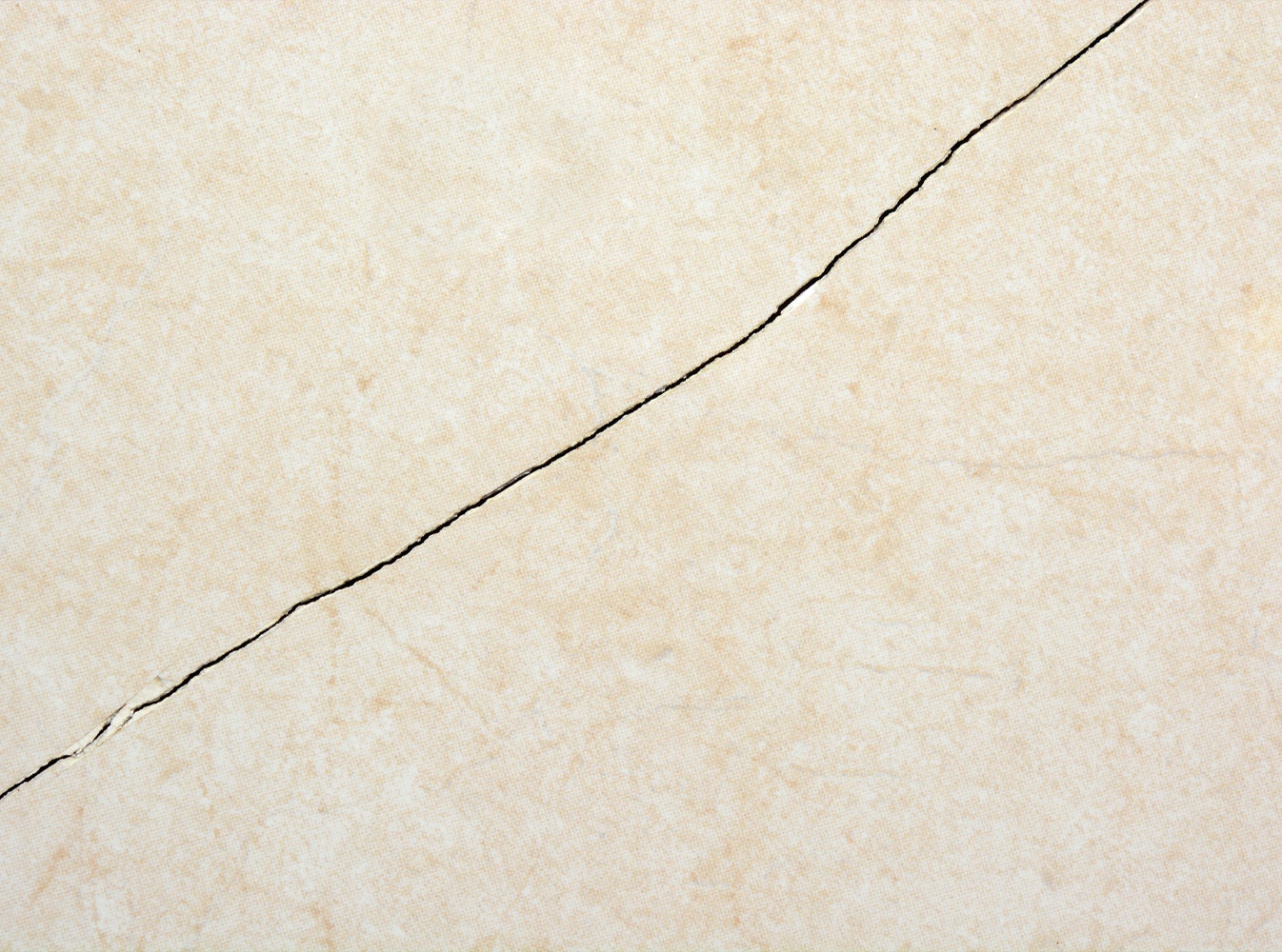

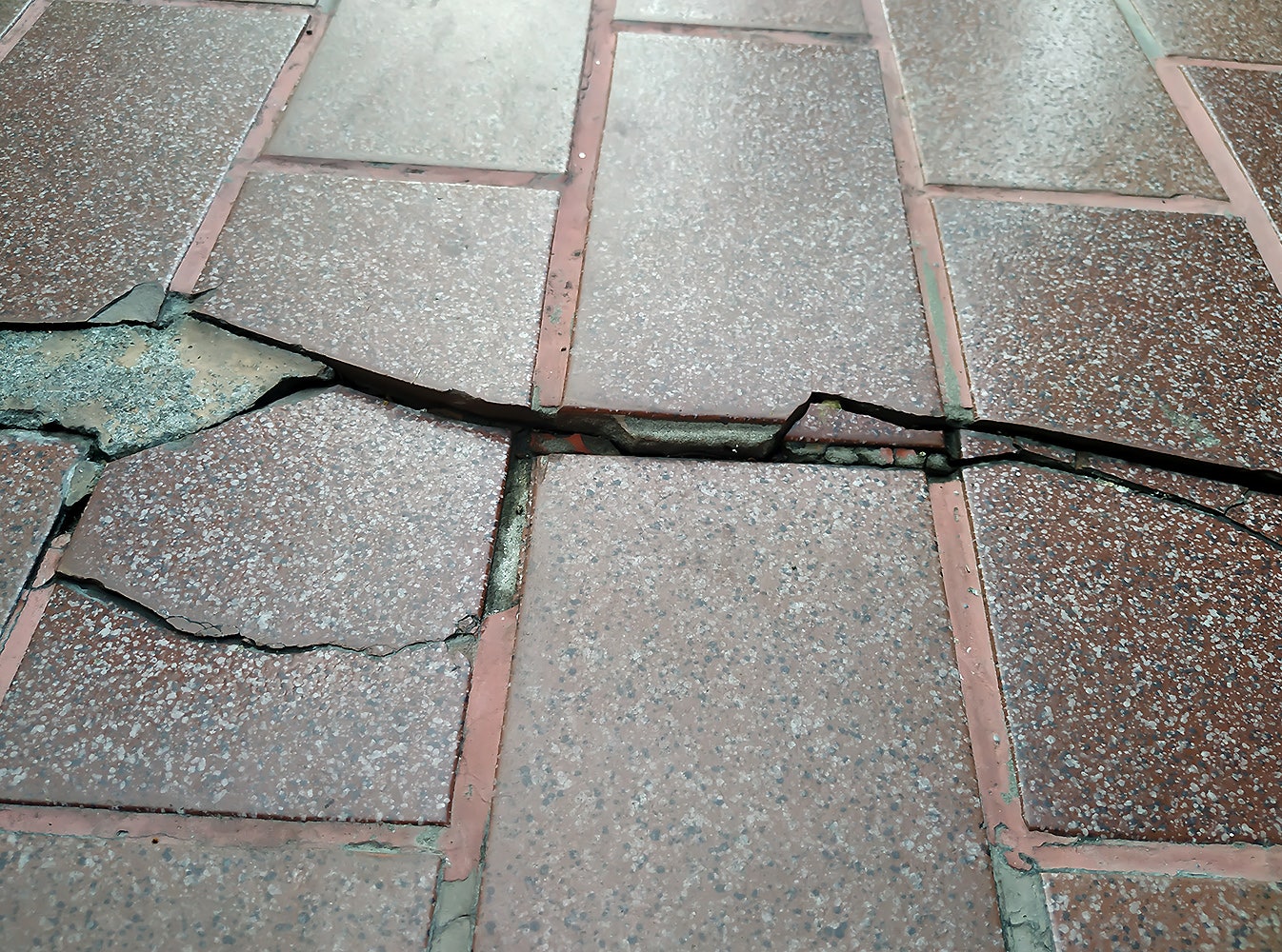

I've Tiled Over Concrete & Have Cracks Along Roughly Straight Lines
Here's what we know;
- The concrete has not been left to cure for sufficient time (1-week per 25mm of slab thickness), or a suitable flexible adhesive has not been used. Shrinkage cracks in the concrete have transferred through the tiles.
- Another cause could be 'foundation rod stress' that can manifest itself during settling and curing of the concrete. This can cause superficial cracking in the concrete. If the tiles were laid without suitable flexible adhesive, cracking can also appear in the tiles. Keep in mind that even when a flexible adhesive is used, the cracking, shrinkage, or movement can be more than that which the adhesive can compensate.
So What Can I Do Now?
Firstly, it needs to be determined if the cracking is only superficial and due to the slab shrinking and curing, or if there are structural issues, or if movement joints were not extended to the surface through the tiling.
If the substrate cracking is superficial, and the concrete slab new, then the tiler has undoubtedly not used suitable flexible adhesives. The tiles should be replaced and correct adhesives used. If the expansion joints in the substrate were not brought through to the surface of the tiles, then that will need to be corrected.
The damaged tiles need to be replaced and movement joints extended to the surface. This is also the case if the concrete slab was old but had obvious established cracks of 2mm or wider and the tiler did not make allowance for this movement.
Our Hot Tip: If you need further help or advice, just give us a call on 1800 4 TILES or drop into one of our 110+ stores.
Why Is The Glaze On My Tiles Flaking Off?
Dry Winter Skin Can Get Flaky. But Your Brand New Tiles Shouldn’t. Check For Any Imperfections On Your Tiles Before They’re Laid To Avoid Disappointment.
Does the surface of your tile look like there has been a bubble of glaze, and the top has broken off? Does there appear to be groups of dimples on the surface?
Faults in manufacturing can be easily visible but sadly occasionally they slip through the sorting process in the factory. To avoid disappointment with your finished room check your tiles before they are laid for imperfections and put aside any you are not happy with.
Beaumont Tiles are more than happy to replace tiles with manufacturing faults as long as they have not been laid first.
What Can Cause The Problem?
It may be as simple as contaminant dust in the kiln between batches. One way that a faulty batch can manifest itself is in a series of bubbles or dimples in the glazed surface.
So What Can I Do Now?
Beaumont Tiles will happily replace any tiles with manufacturing faults, simply bring them back to the store you got them from, and they will happily change them for you.
To make this a little easier please write down the printed batch number on the side of the box so Beaumont’s can supply tiles that match the shade of your other tiles.
We will also do a thorough check of our stocks from that batch to remove any others that may have slipped through on that day of manufacture.
What If The Tiler Has Already Laid The Tiles?
The policy at Beaumont Tiles is that we will replace faulty tiles that have not been laid but please contact the branch you purchased them from as we will try to help if we can.
To avoid disappointment with your finished room please check your tiles before they are laid and ask your tiler to look out for imperfections as he is tiling and to put aside any you are not happy with.
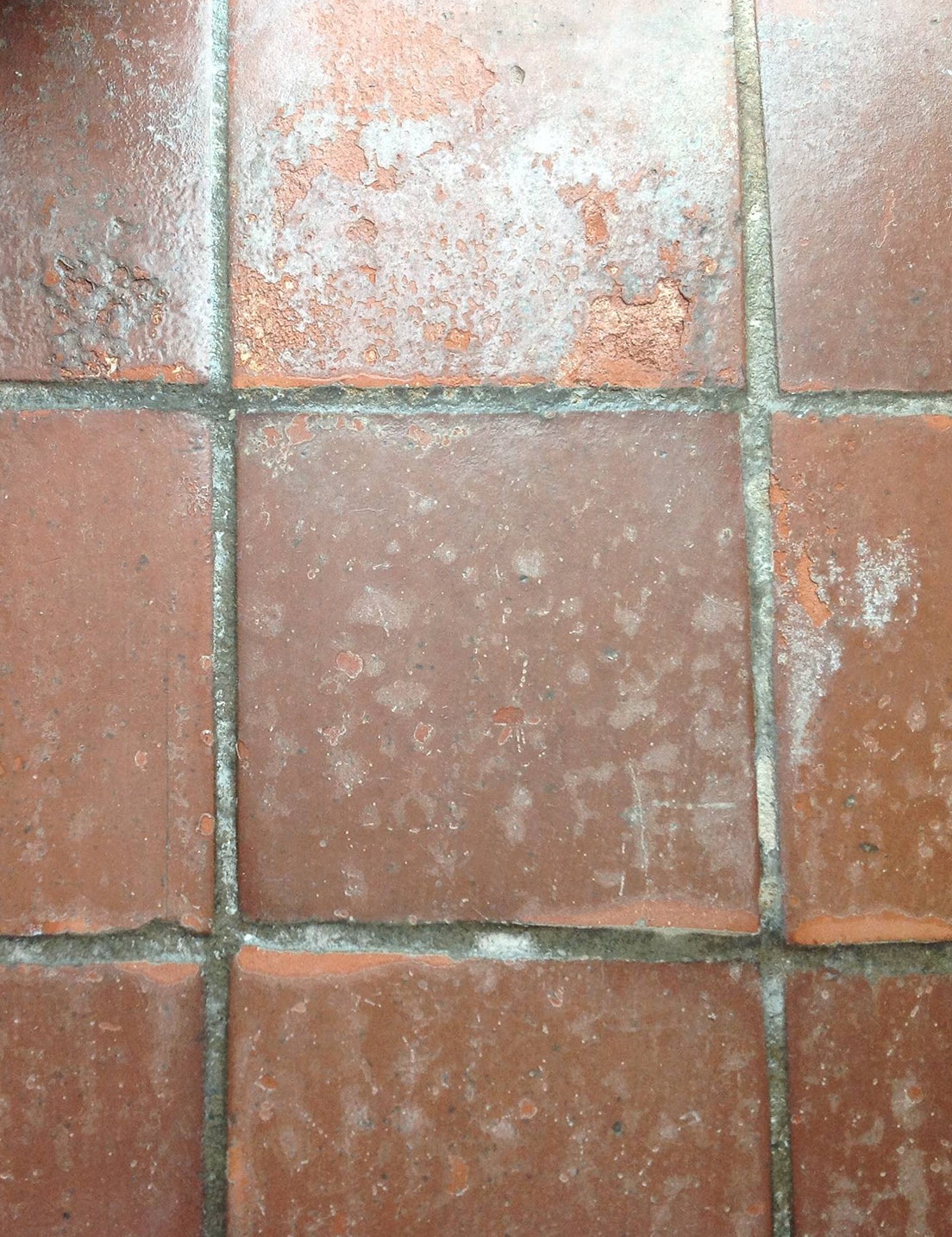

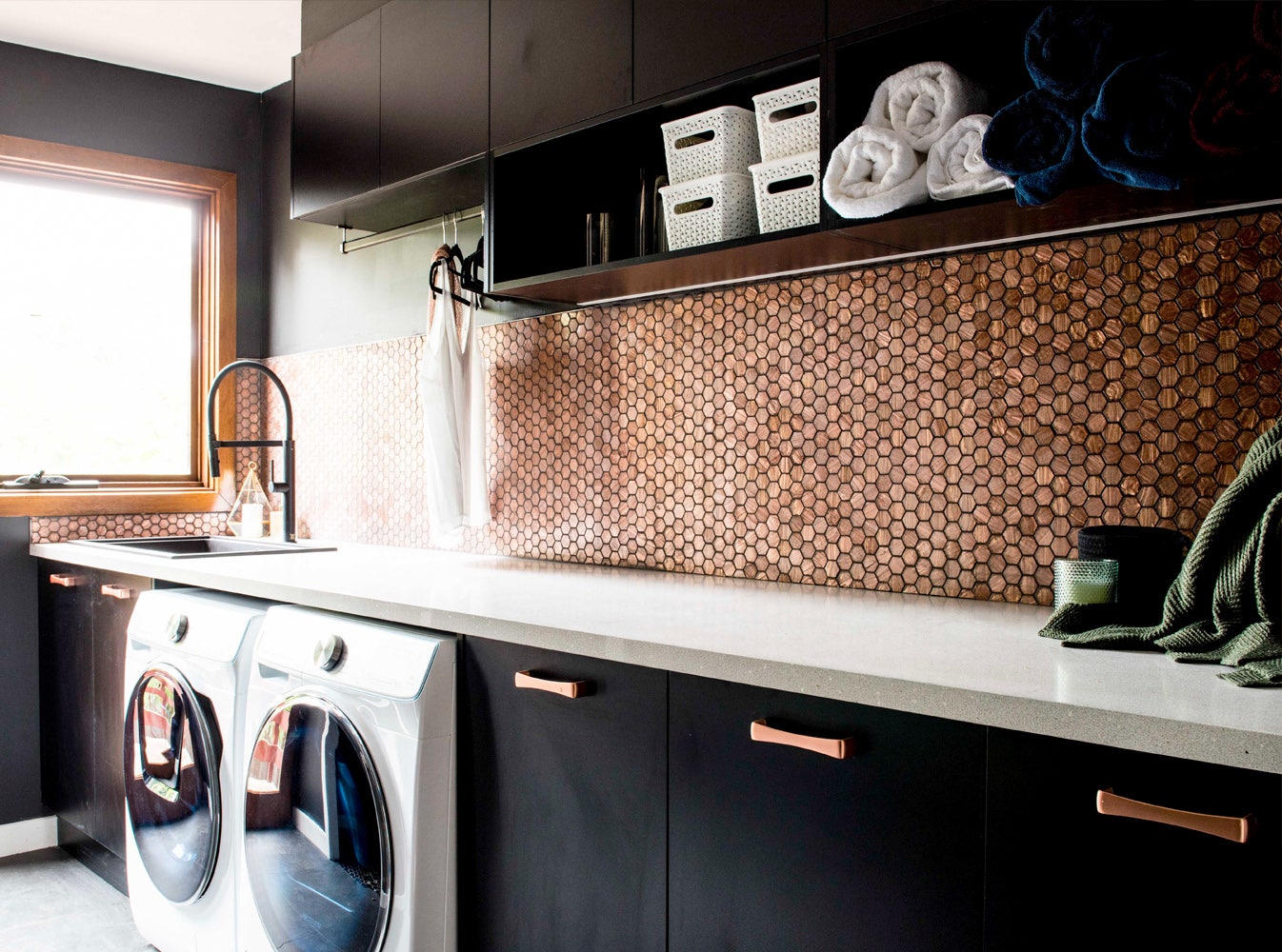

How Do I Care For Metal Tiles?
Soft Metals Such As Gold And Silver Are Easily Scratched And Wear Just Like The Precious Metals, These Special Tiles Deserve Special Care Too.
Gold, silver, copper and other metal finishes are quite common on tiles and they can look really effective, especially in a bathroom.
While it is generally accepted that tiles are a very durable and long-lasting surface, metallic finishes are not protected by a glazed surface and can become damaged.
Gold is a very soft metal, and when applied to a tile surface, it can be easily damaged by abrasives and harsh cleaners. Silver is also a soft metal. Natural copper tiles or mosaics will age with a beautiful patina but this will be removed by any abrasion or chemical cleaners.
What Can Cause The Problem?
- Soft metals, especially gold and silver, are easily scratched and worn.
- During installation, these plated finishes need to be protected with tape, especially when grouting the tiles. Normal grout contains sand, which can be quite abrasive. Using non-sanded grout will also reduce abrasion.
- Harsh scourers, abrasive creams and powders, and strong chemical cleaners can wreak havoc on metallic finishes. Besides this, they are totally unnecessary to clean tiles. Warm water and a drop or two of disinfectant are generally all that is needed to clean tiles, and this also applies to these more delicate décor tiles. Then wipe over with a soft cloth.
So What Can I Do Now?
- Once the tiles are installed, if the plating is damaged or wears off, there are only two choices available.
- Accept that over time the surface will eventually wear off.
- Replace the tiles and avoid all harsh or abrasive cleaners and chemicals.
Our Hot Tip: We urge you to make the decision carefully, metallic tiles are bold and make a stunning statement, but need care and a little TLC. You can’t make a claim on either the factory or Beaumonts against worn metallic surfaces on tiles.
Our Hot Tip: Many other finishes are more durable, but still susceptible to damage or wearing off when attacked by harsh cleaners. Metallic glazes can also react to acidic substances in food so be careful with citrus fruit around metallic glazes and always avoid acidic or citrus based cleaners.
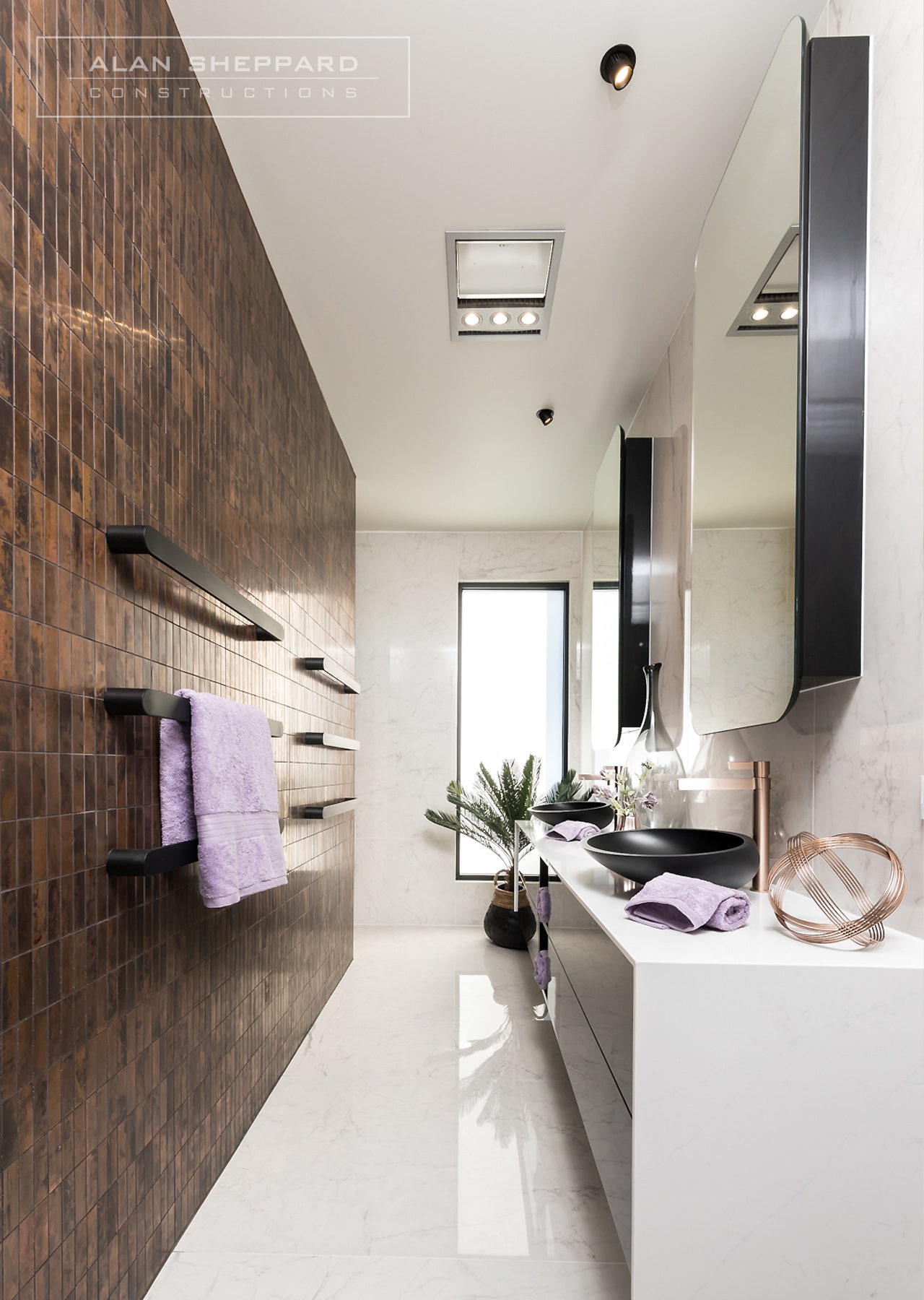

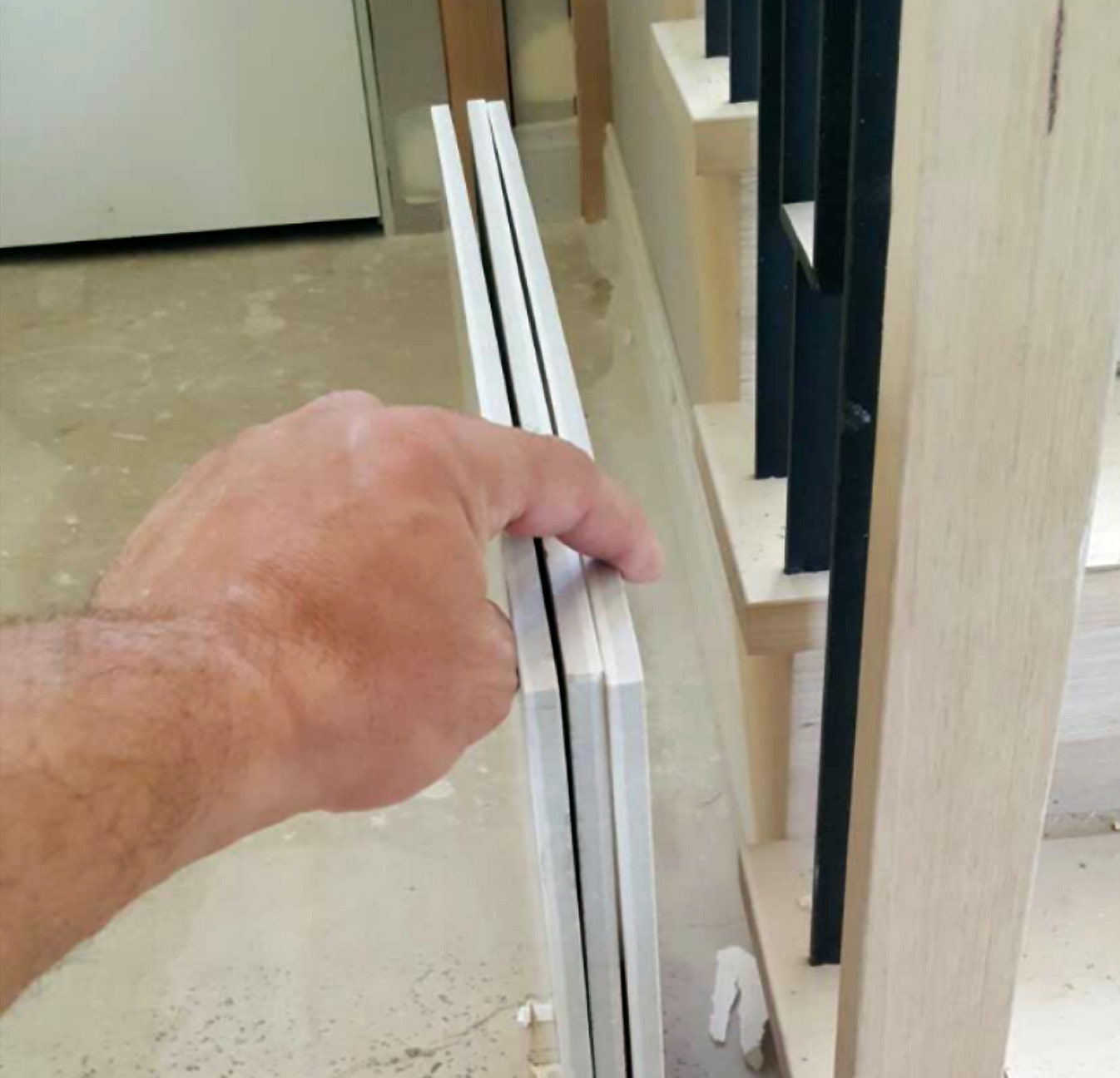

Why Aren’t My Tiles Totally Flat?
New Tiles Thrown You A Curve Ball? Learn What’s Acceptable And What’s Not When It Comes To Curvature Right Here.
Every tile we have made for us is subjected to individual inspection to ensure they comply with Australian Standards. Not every tile complies which is why they all go through a sorting process. From time to time a non-compliant tile will slip through. If you encounter any, we will gladly replace them. A professional tiler will put any out of standard tiles aside and not use them.
For dust-pressed wall tiles, the Australian Standard allows a curvature of + 0.5 per cent of the dimensions, providing it does not exceed + or - 2mm or -0.3 per cent, providing it does not exceed 1.5mm. Curvature can be a problem when rectangular tiles are laid brick bond on a floor. They should be dry laid first to check for any problems and the laying pattern may need to be adjusted.
If you or your tiler feels the tiles you have received are not to a standard you would expect the first thing we would do is to measure them against the Australian Standards. If they are within standard but you are still unhappy, provided the tiles are not yet laid we will be happy to exchange them or give you a refund as long as they are in line with our returns policy.
Our Hot Tip: Read out Returns Policy here.
